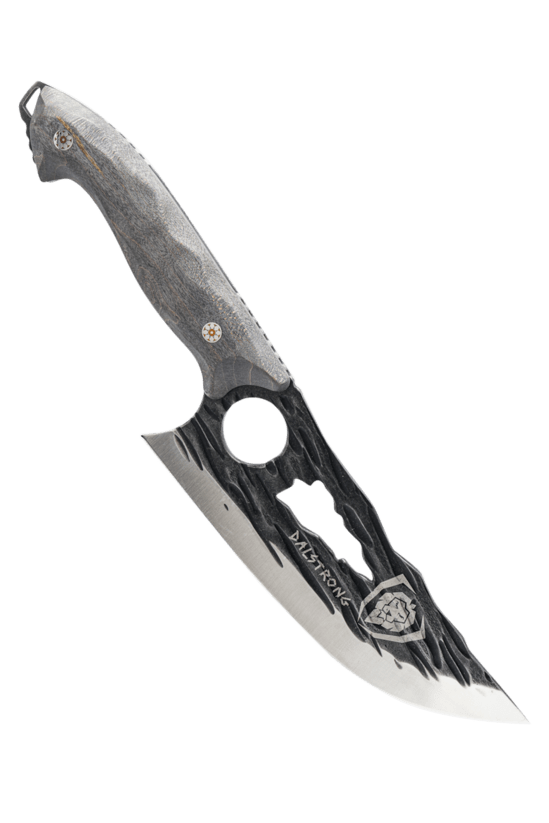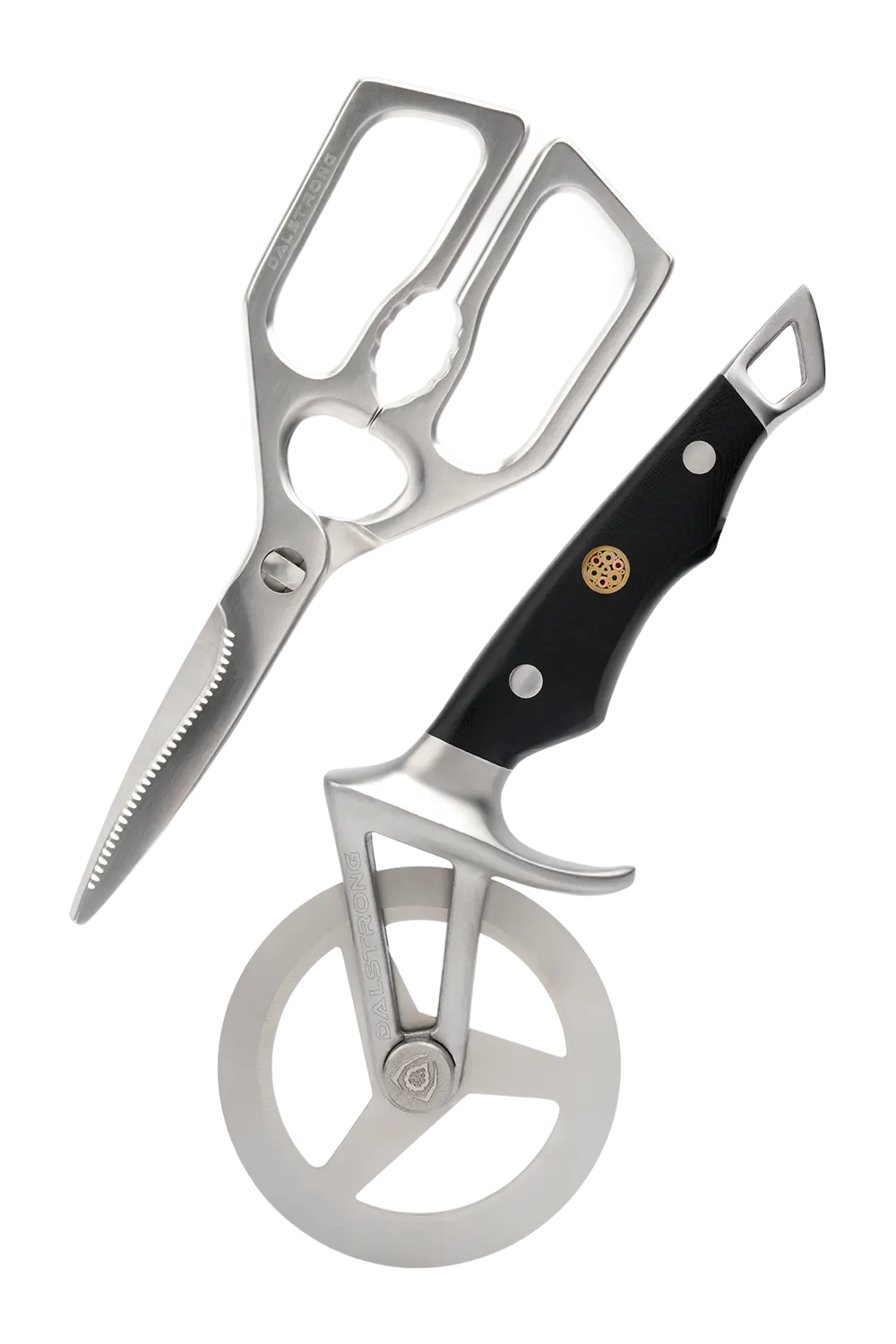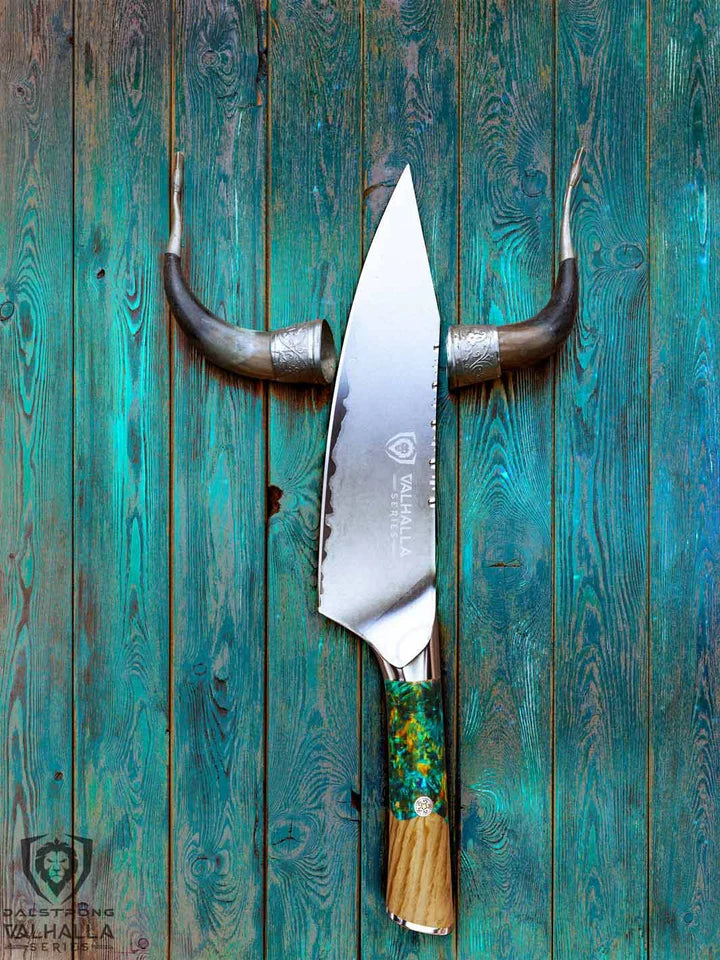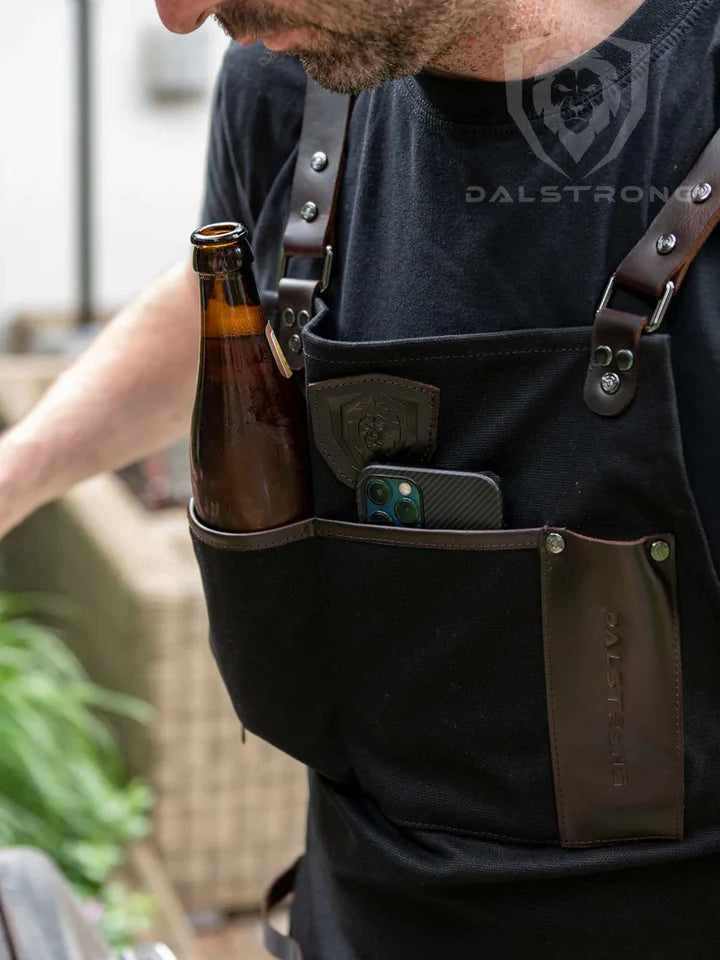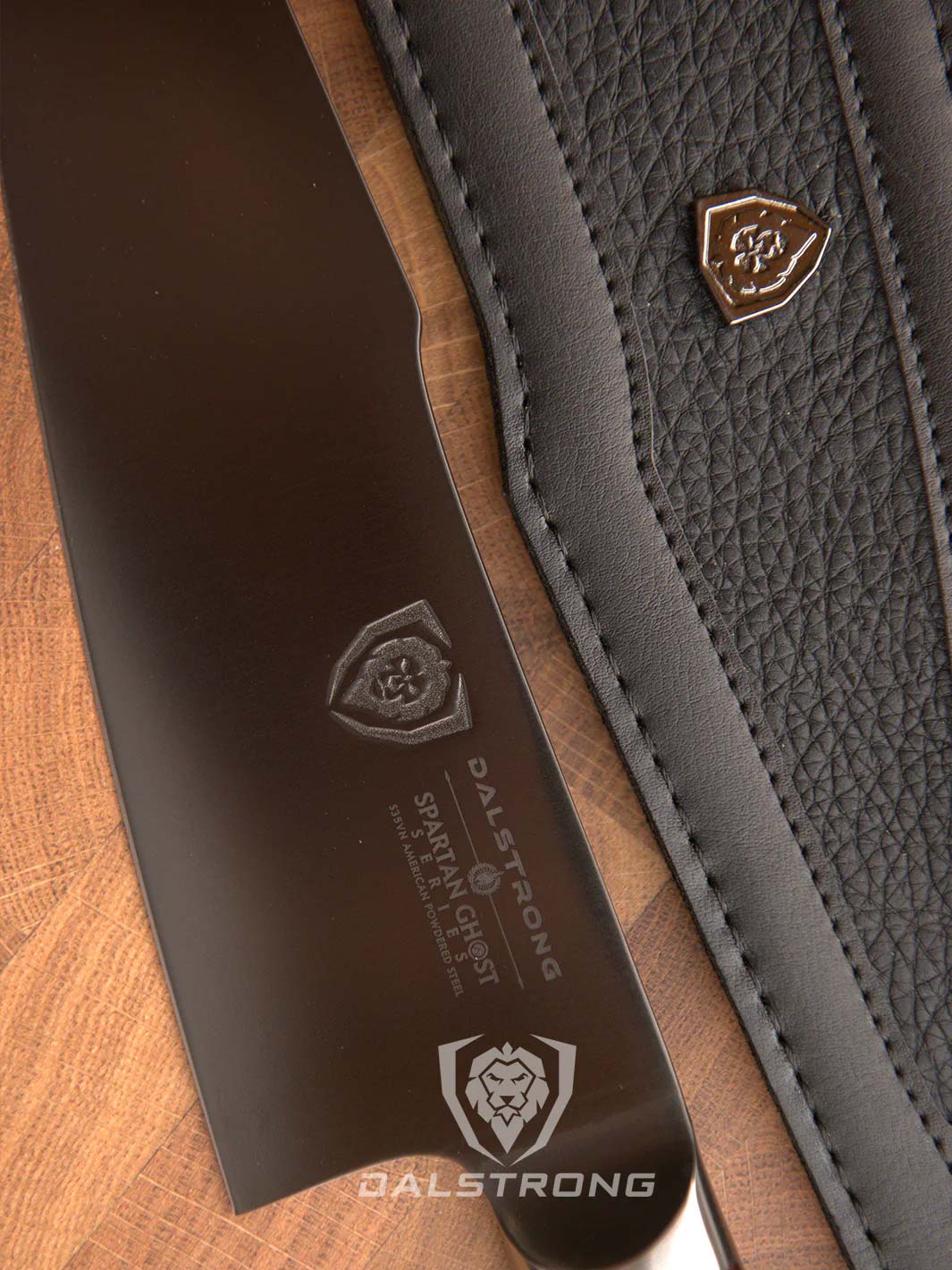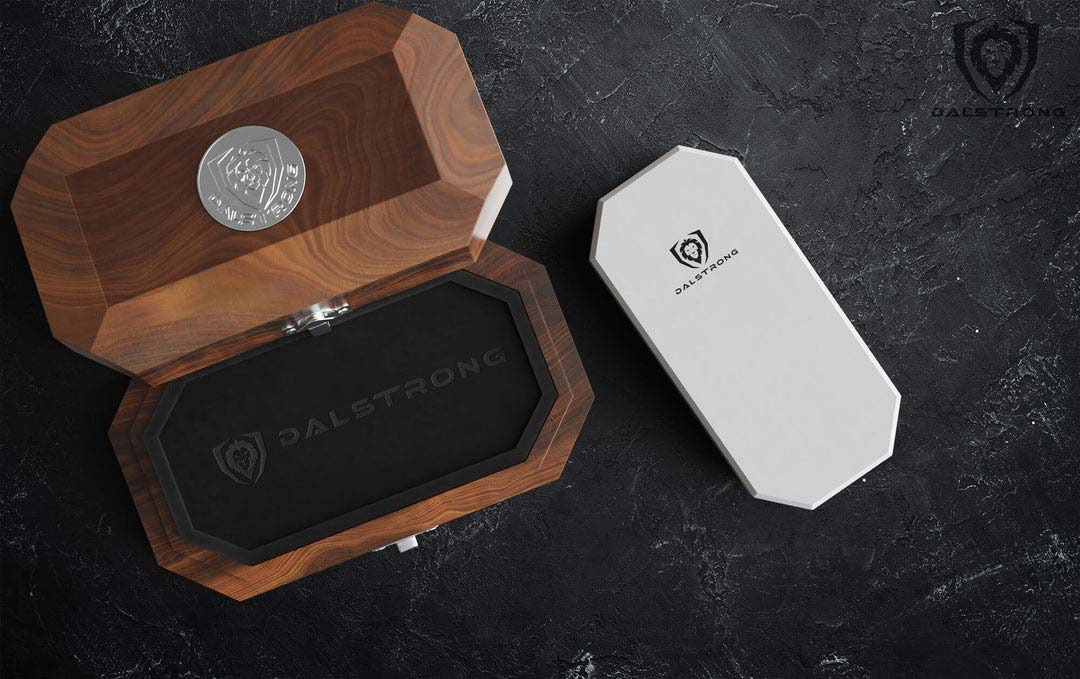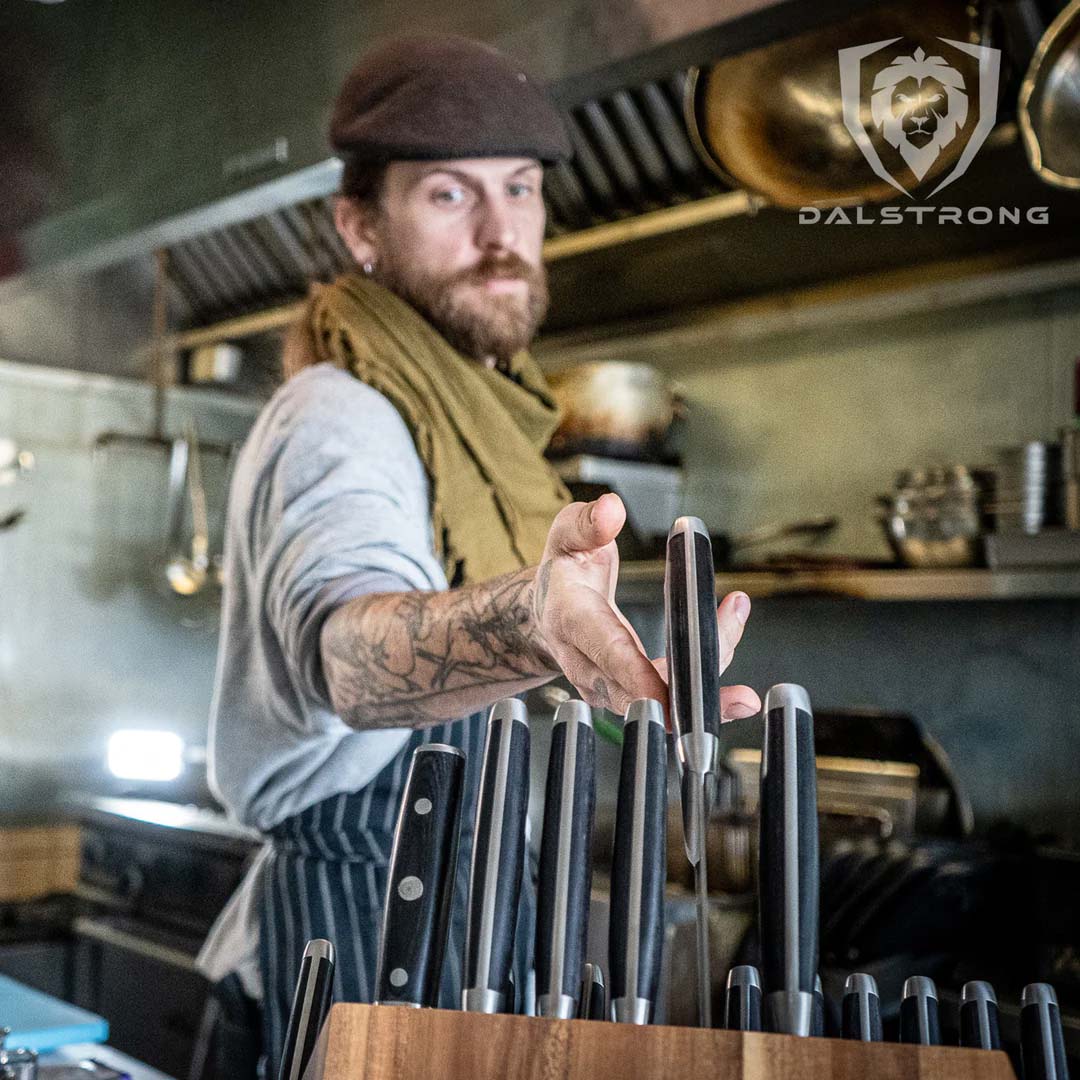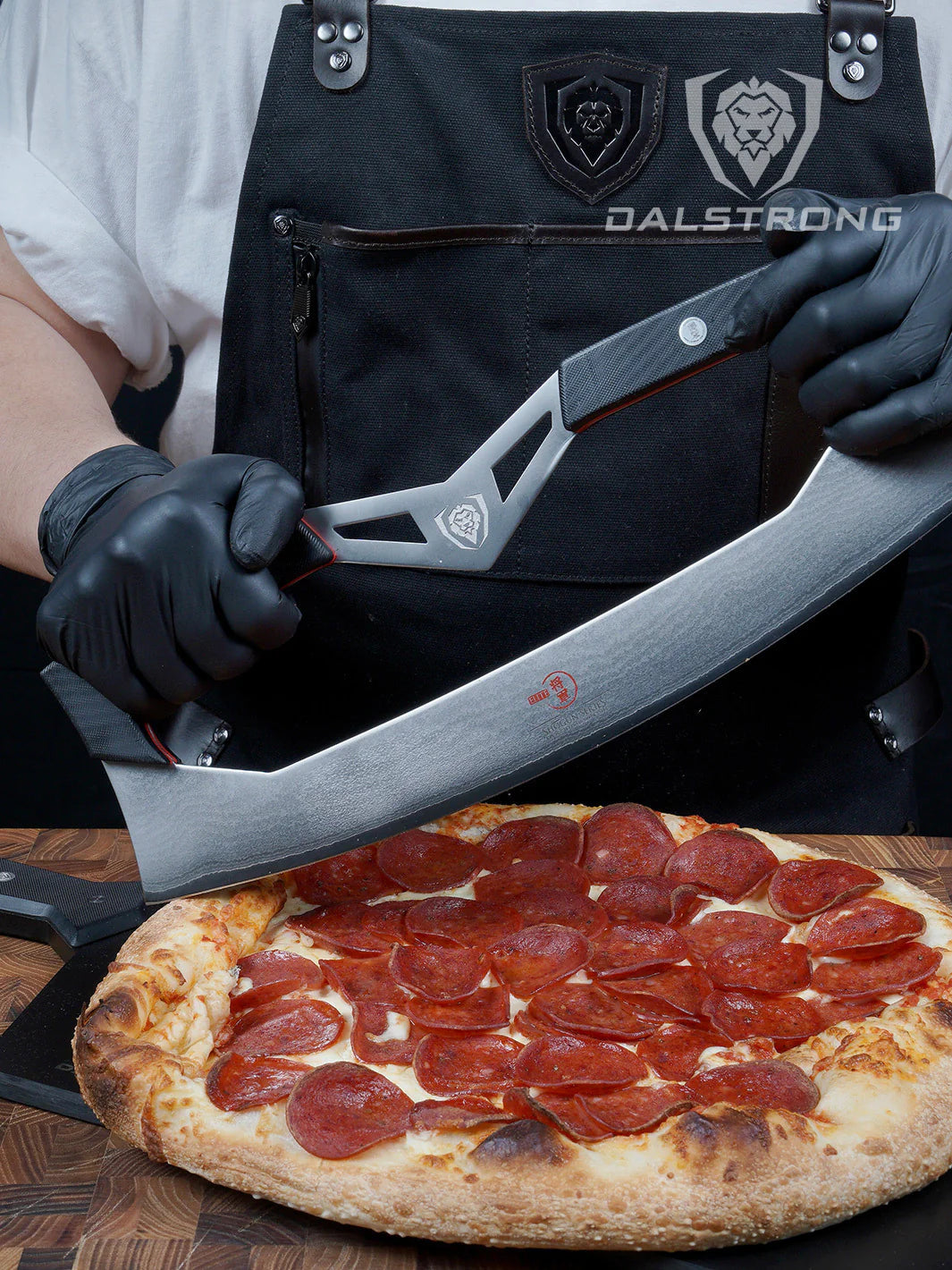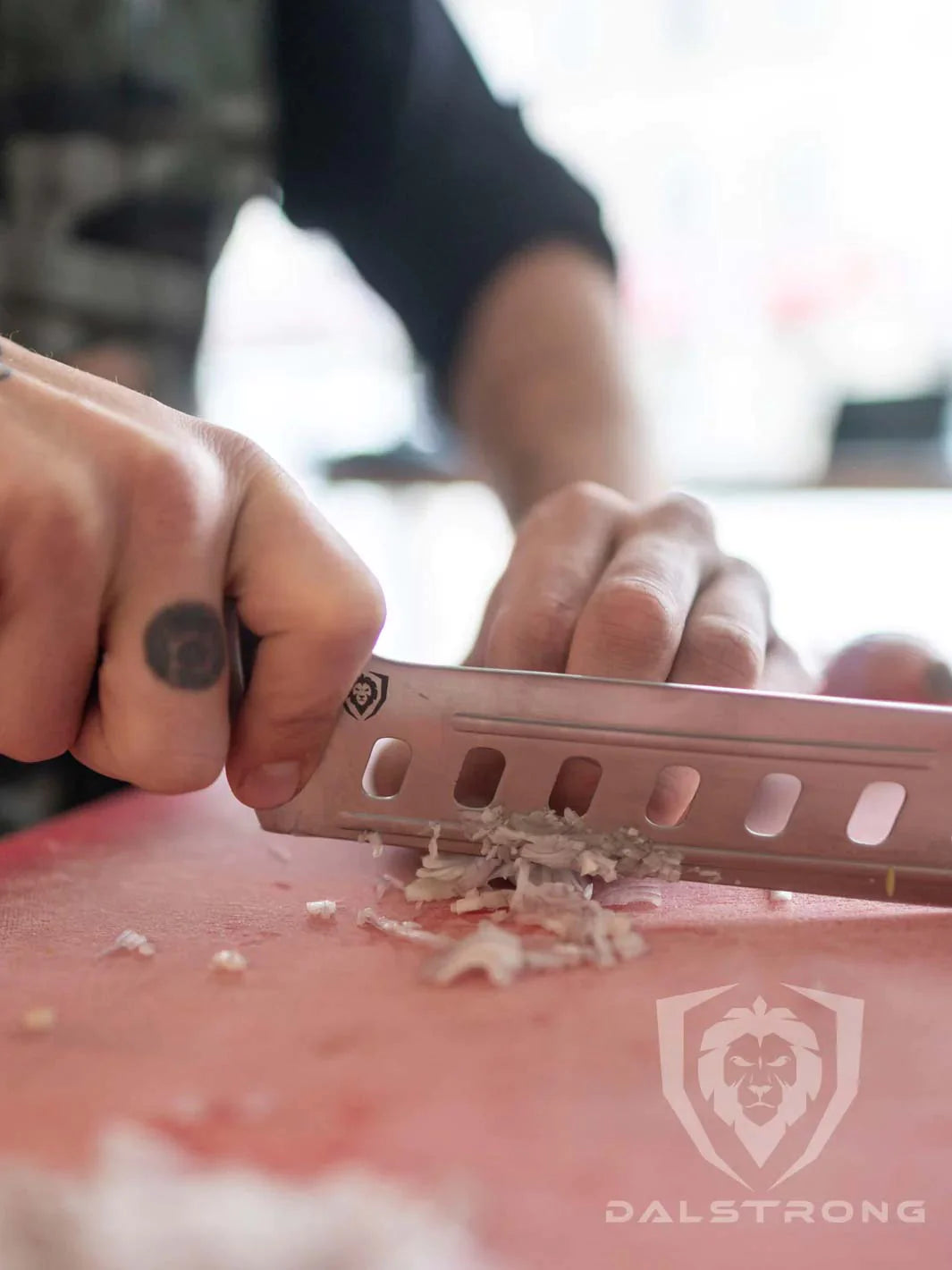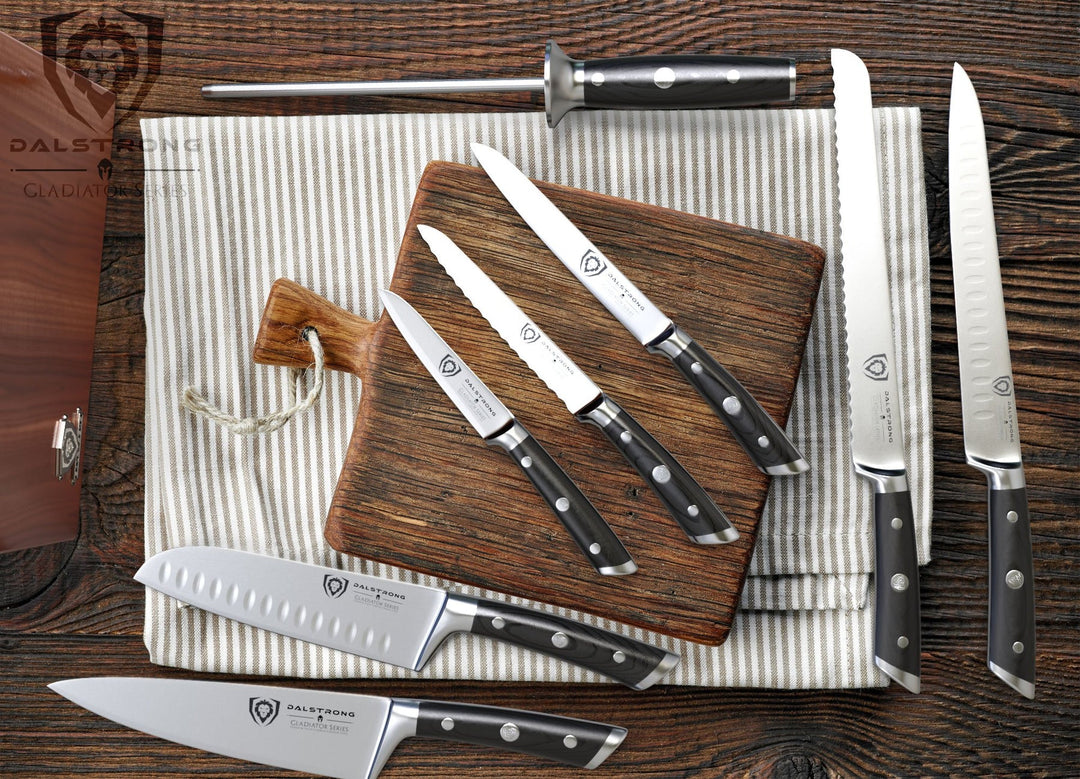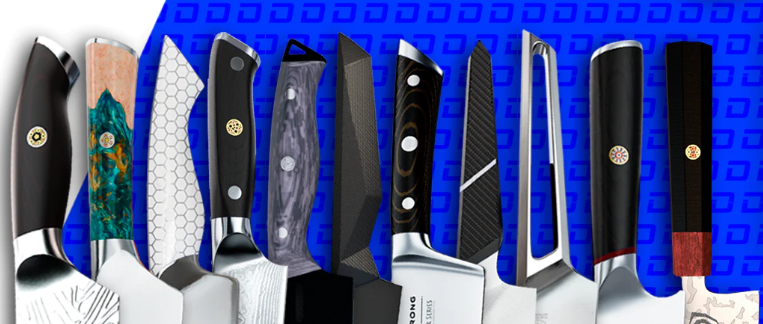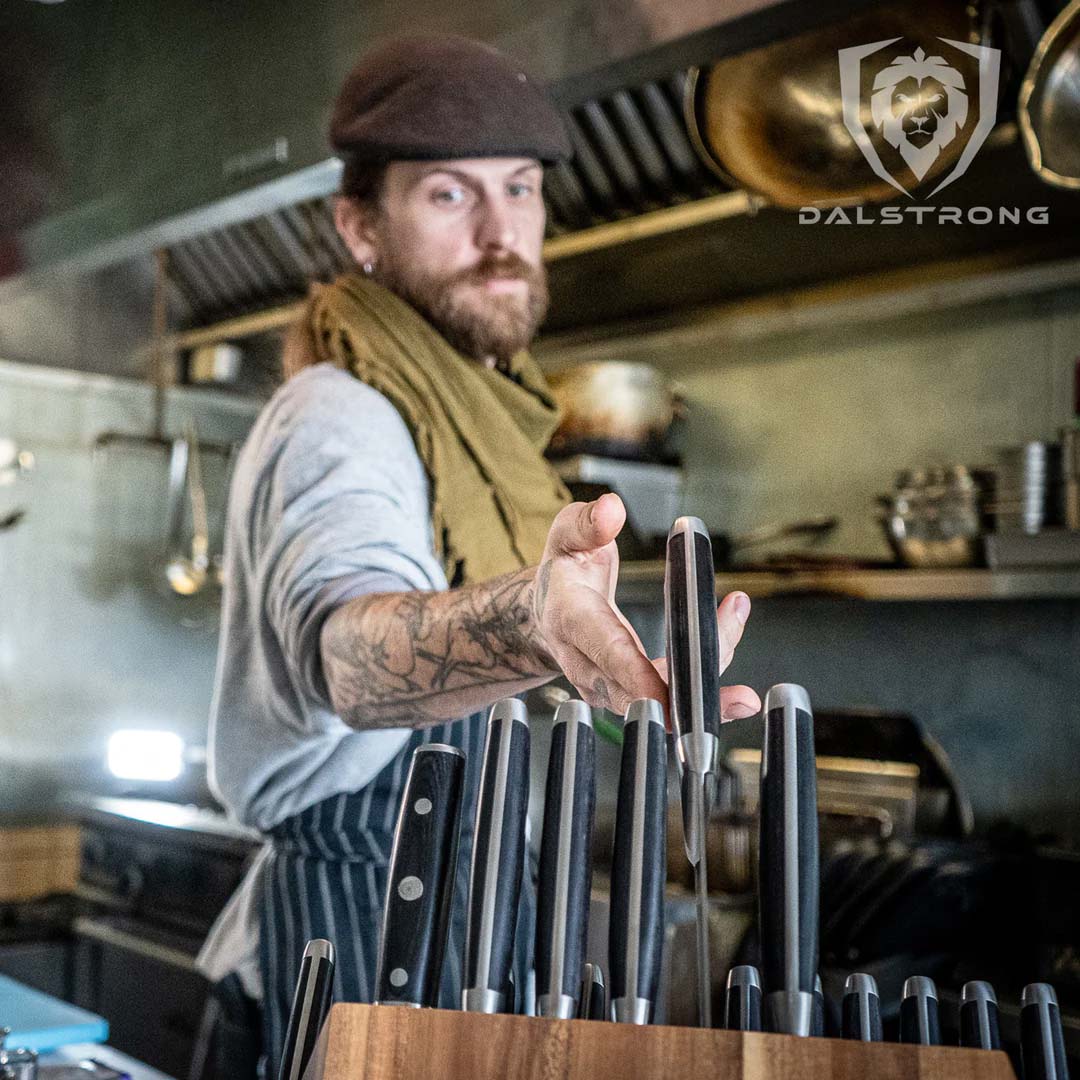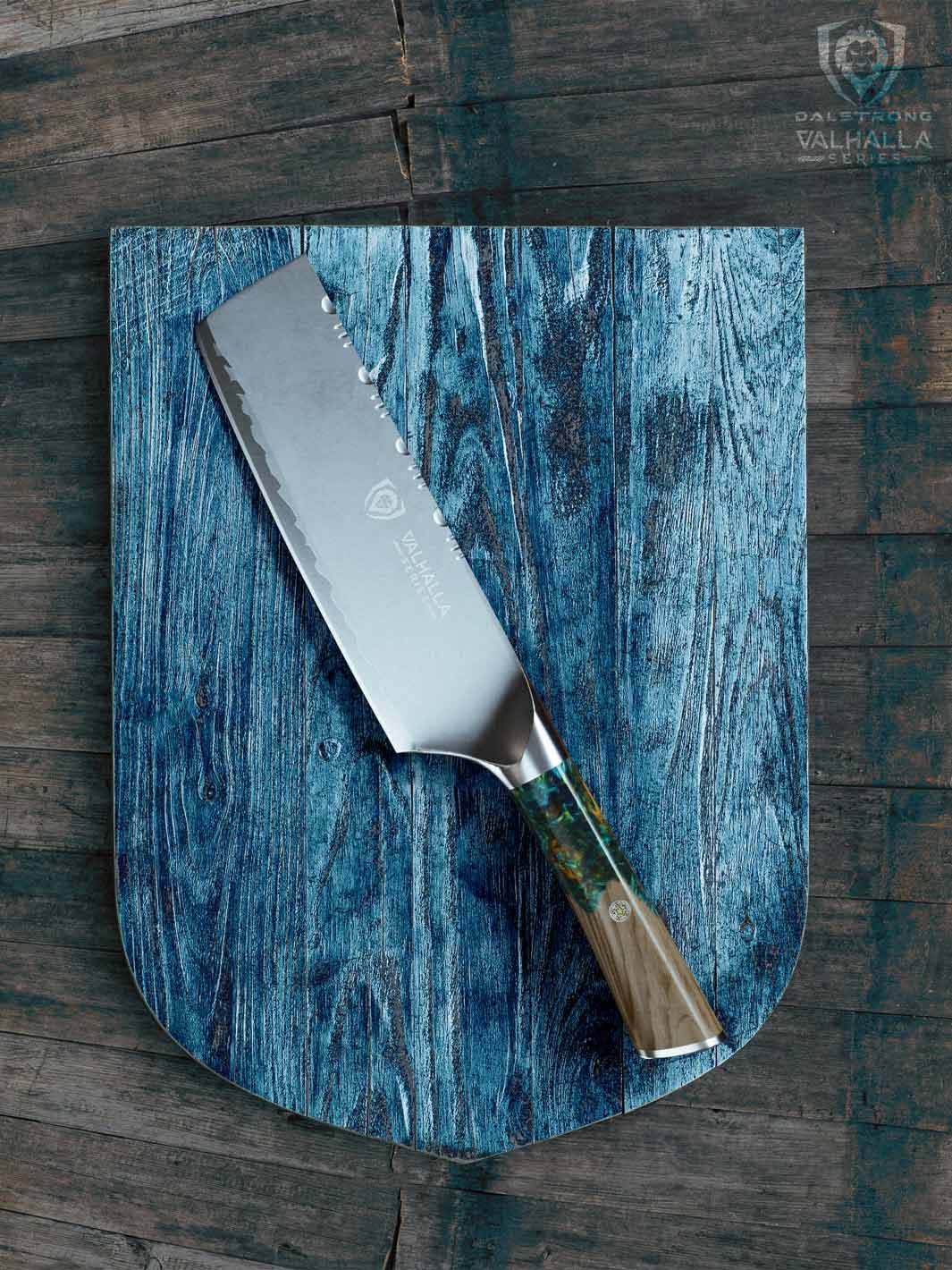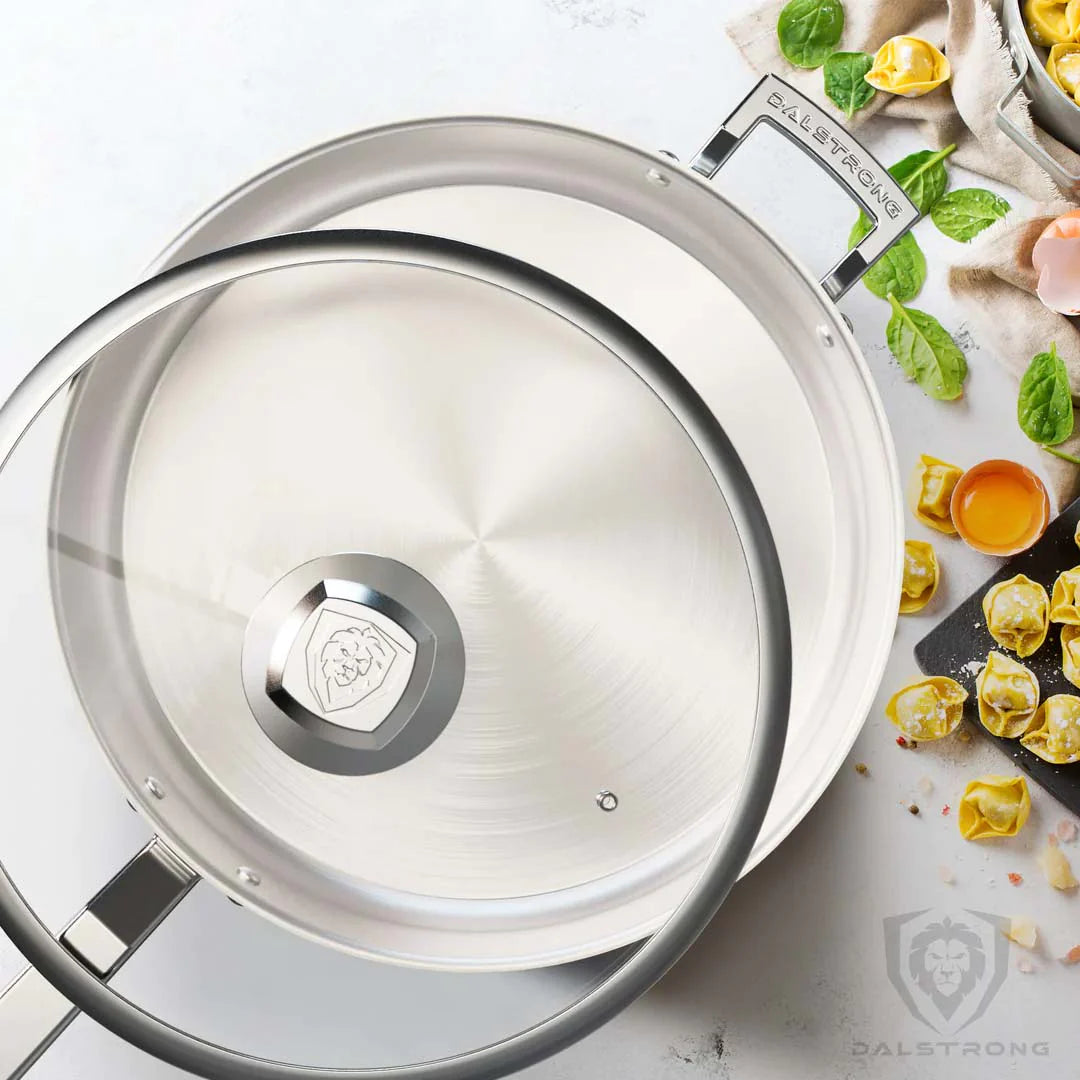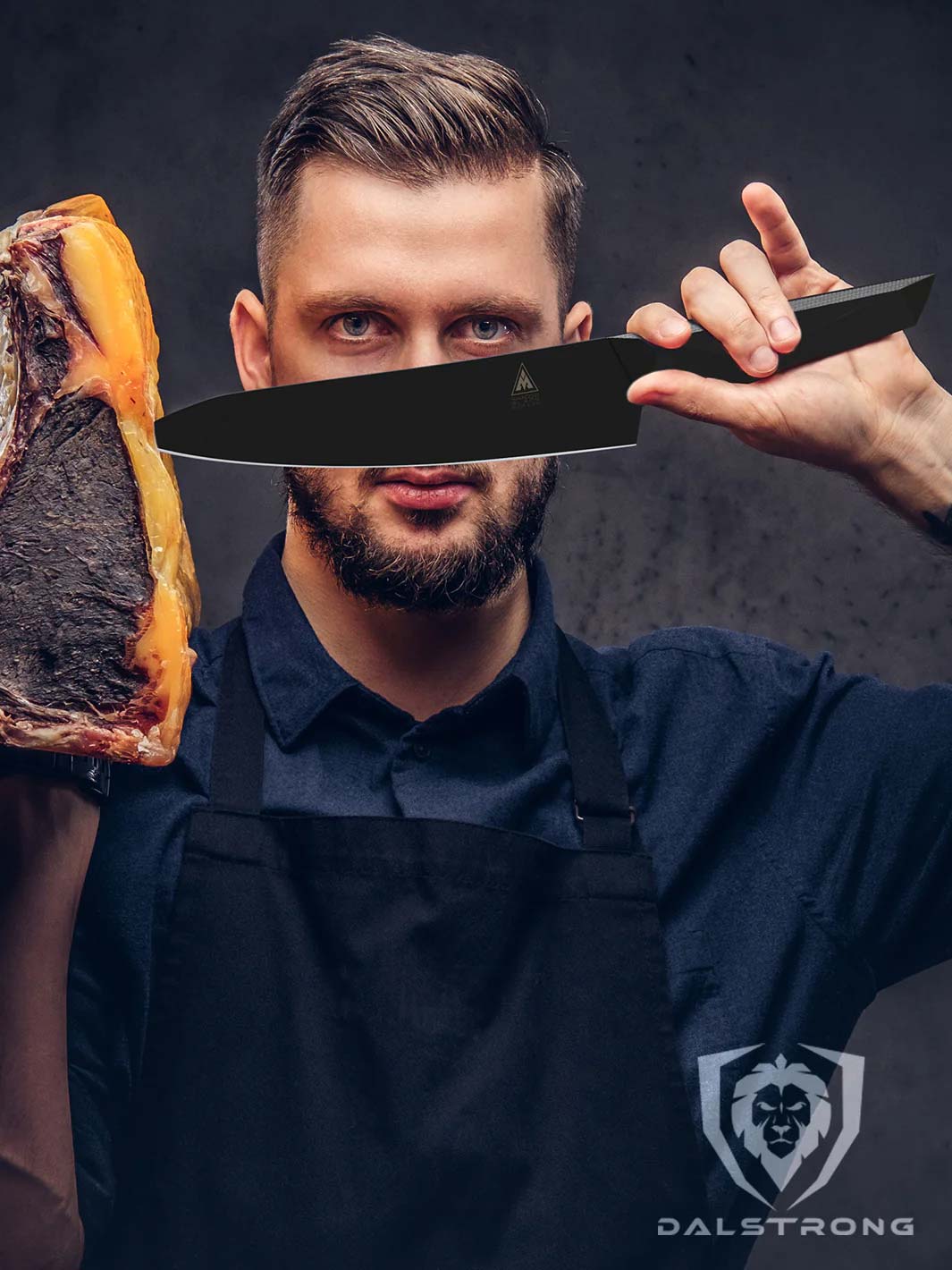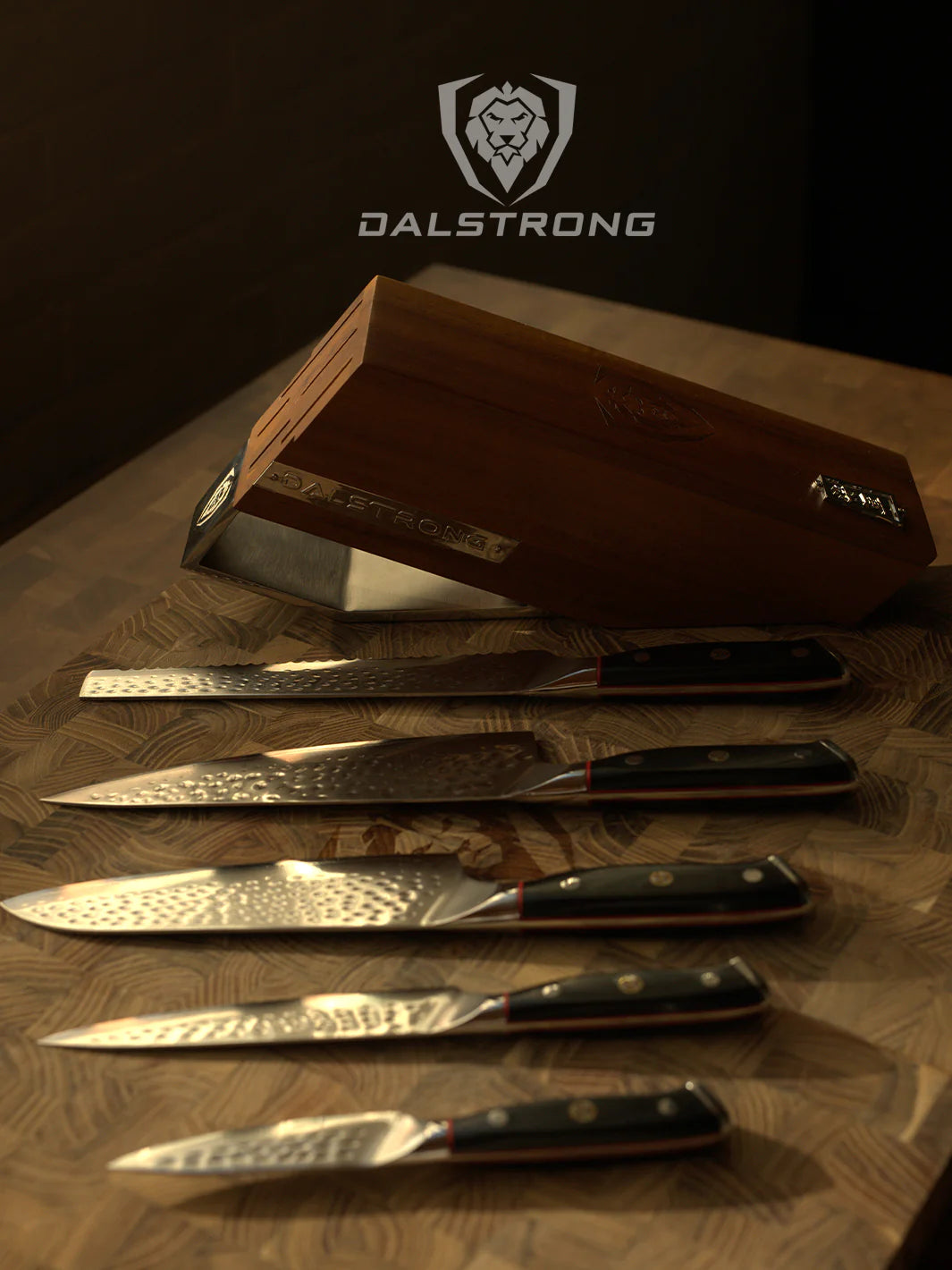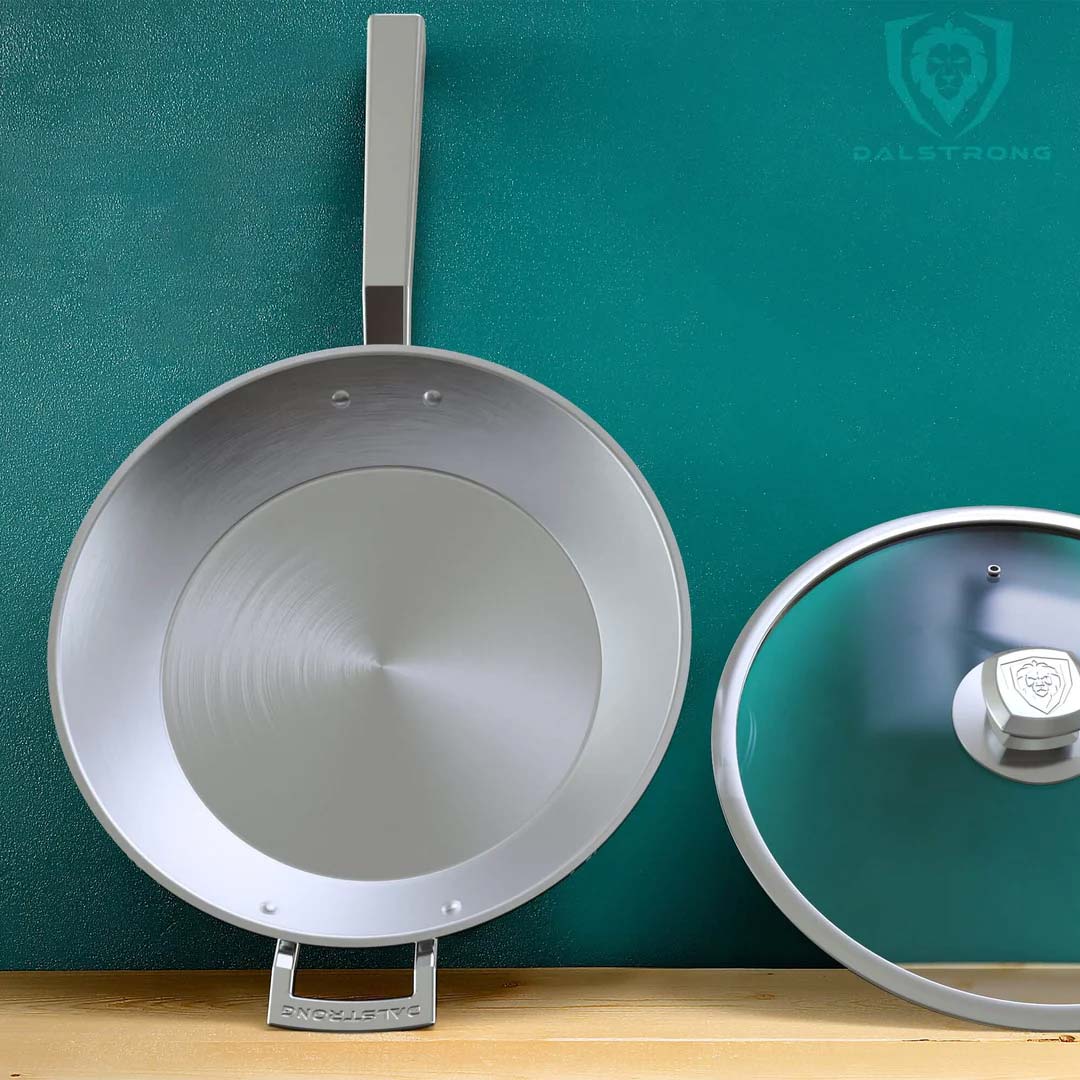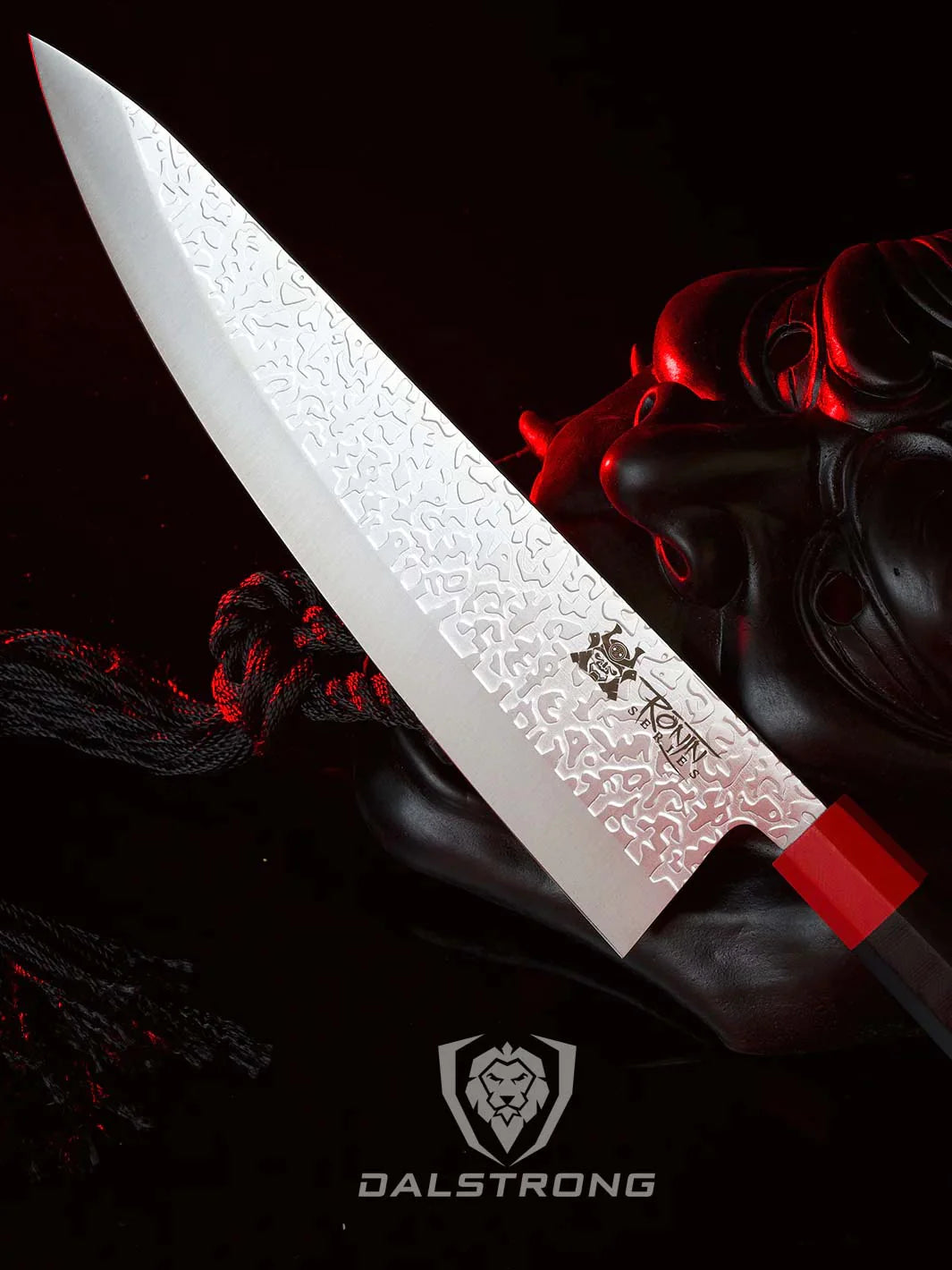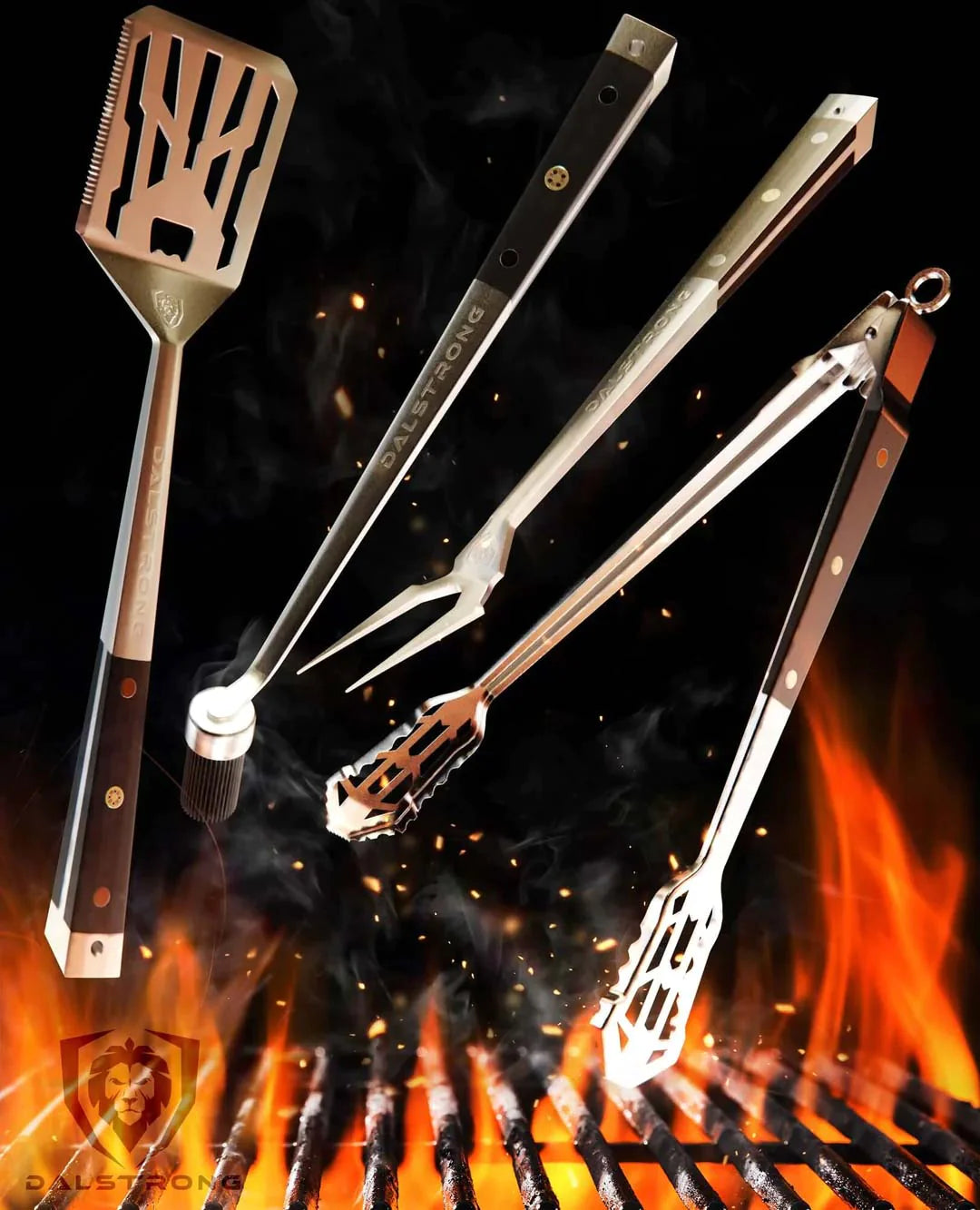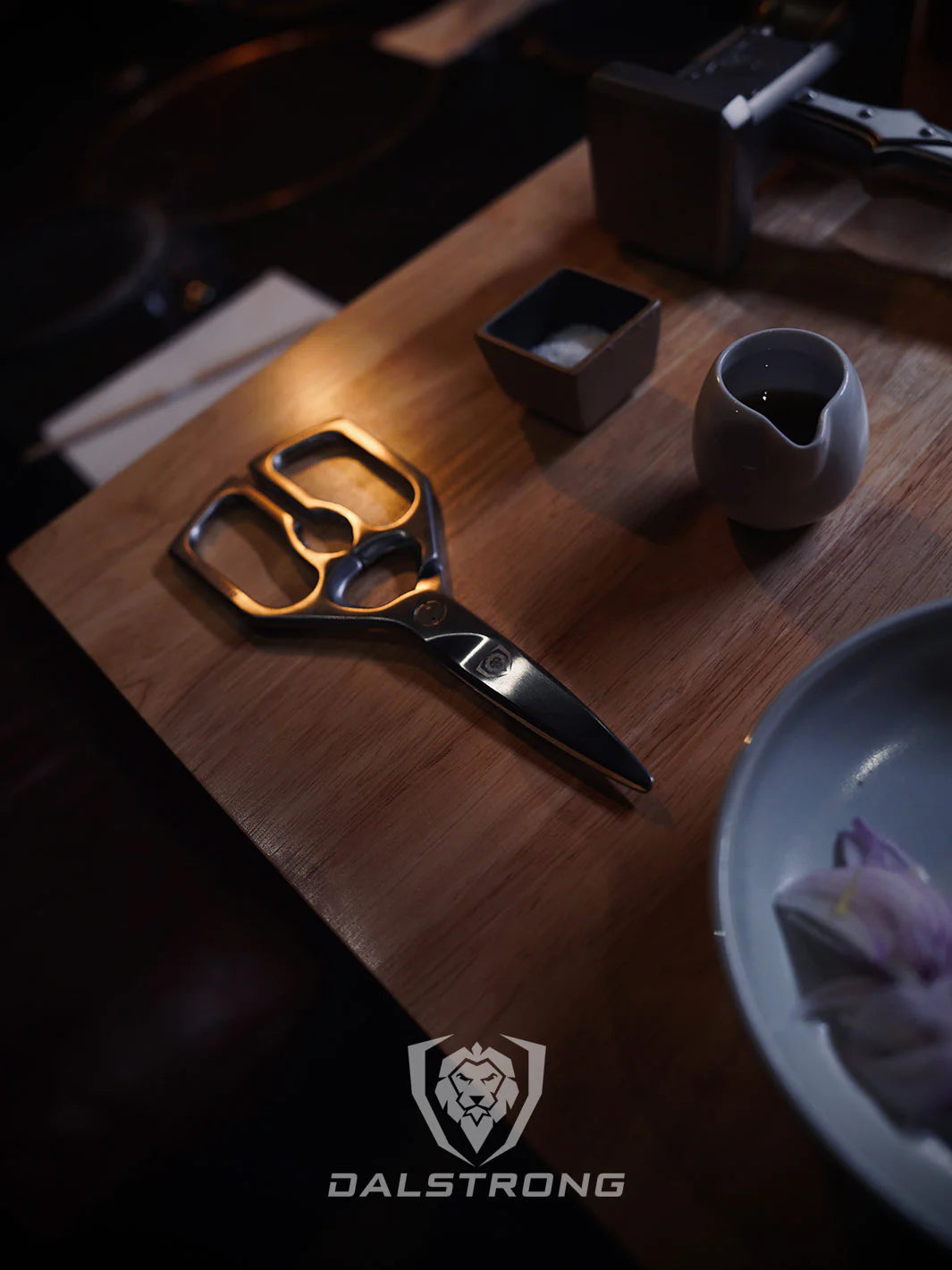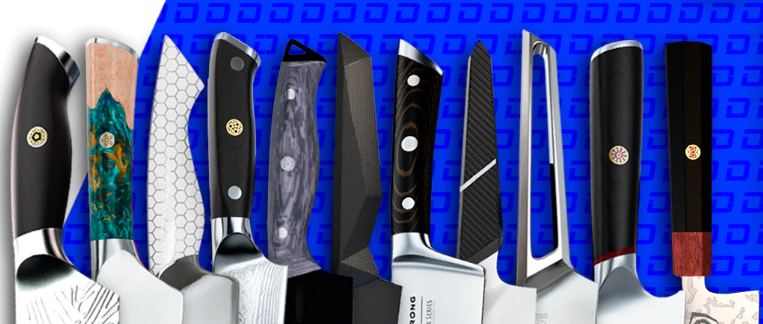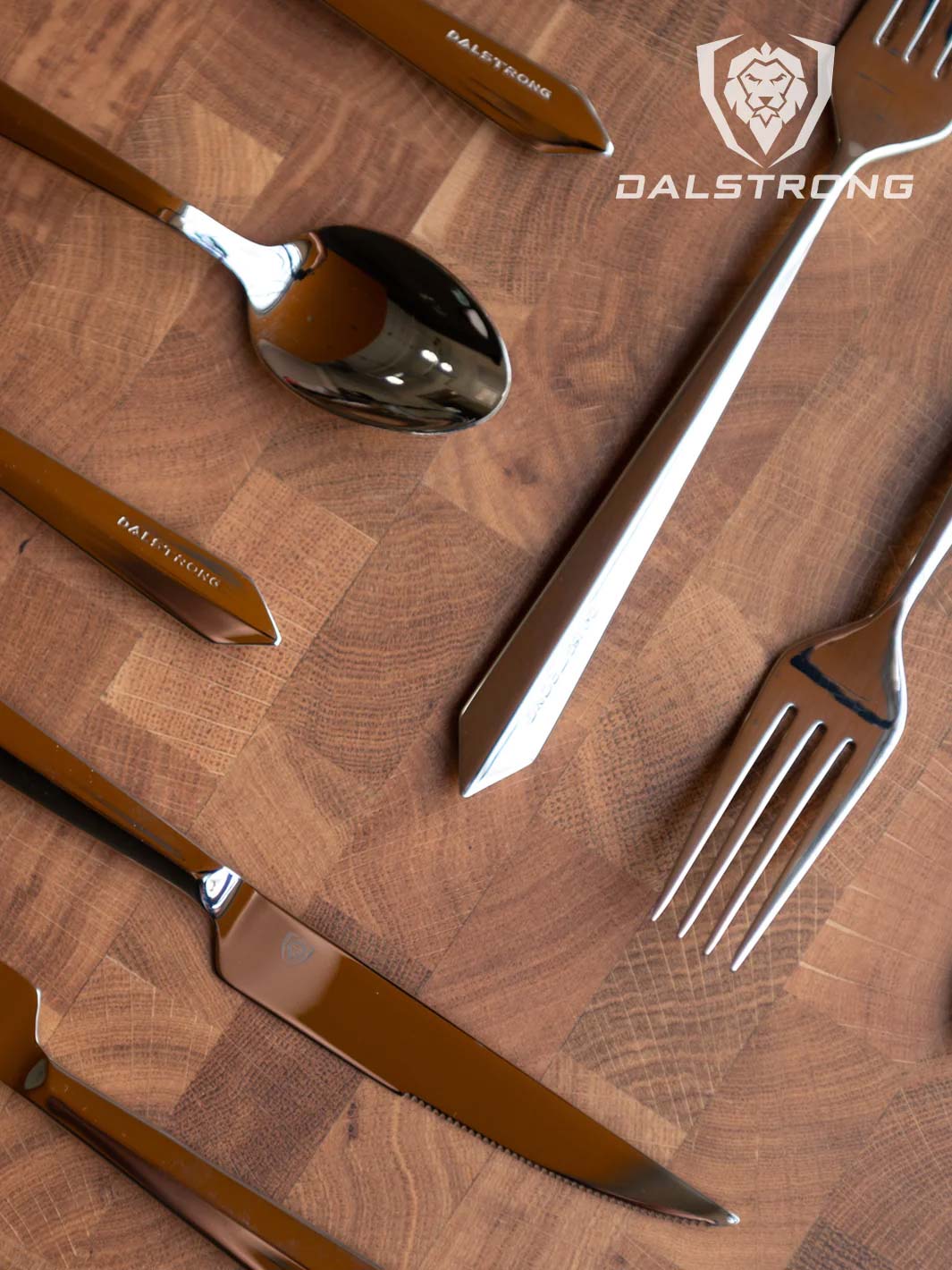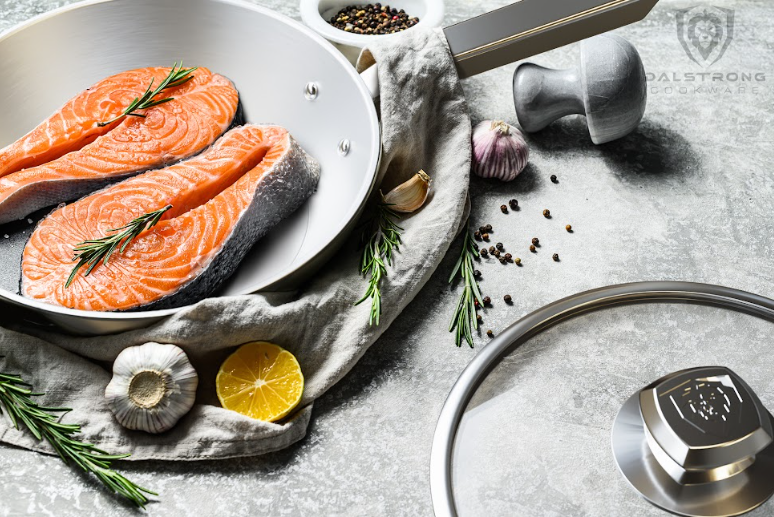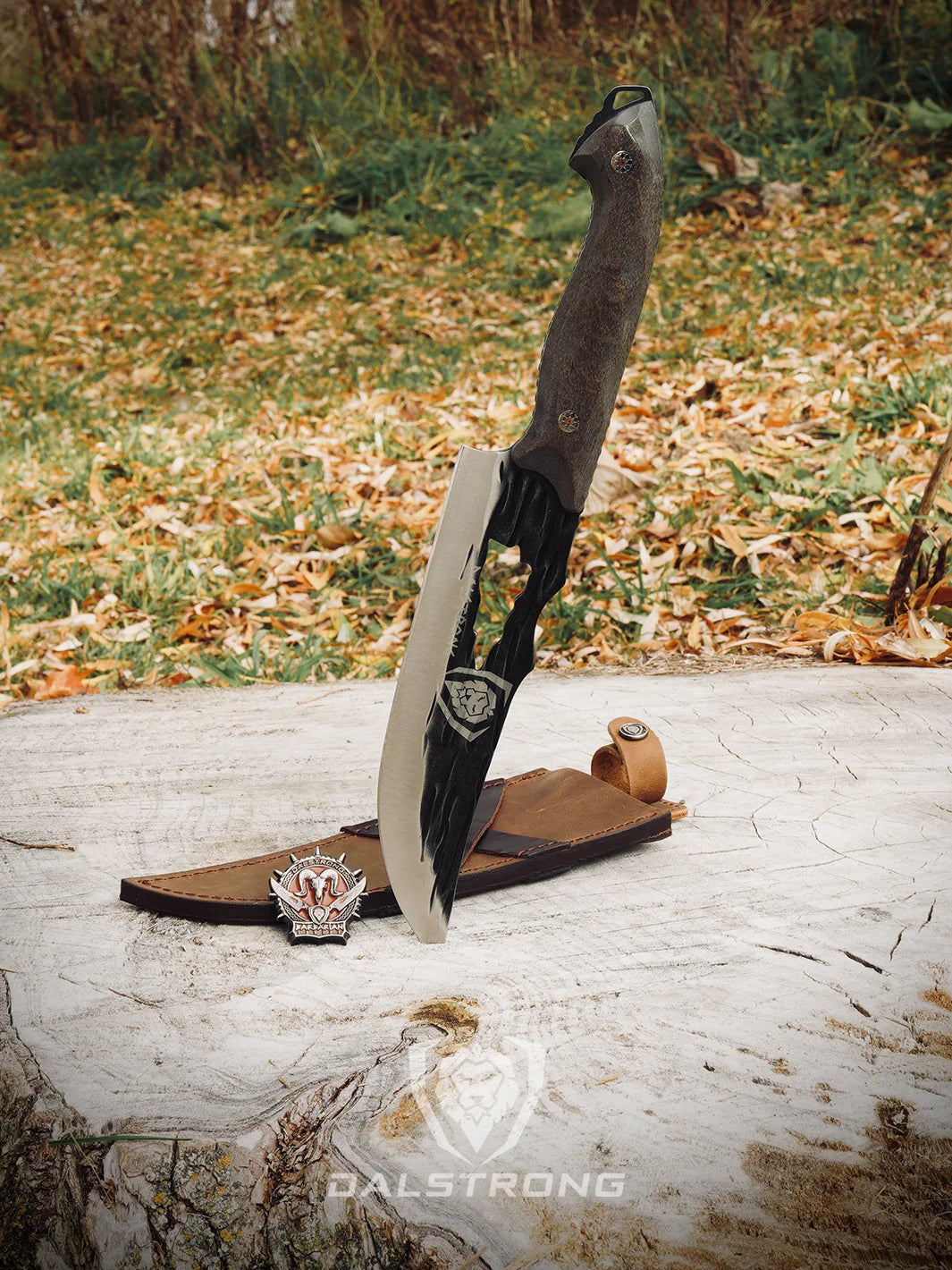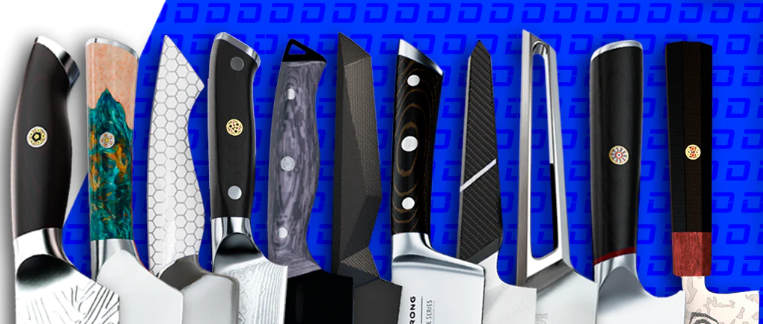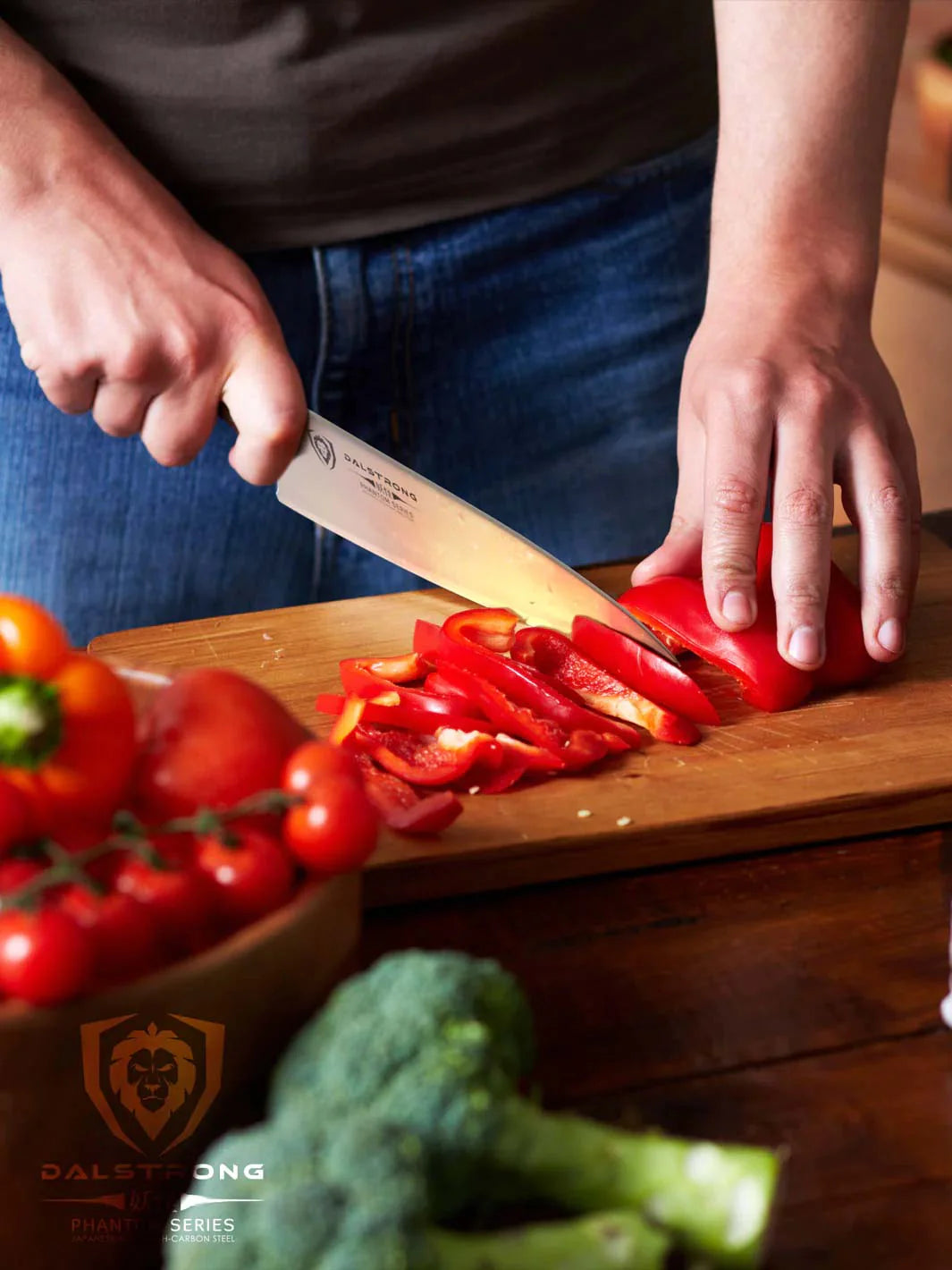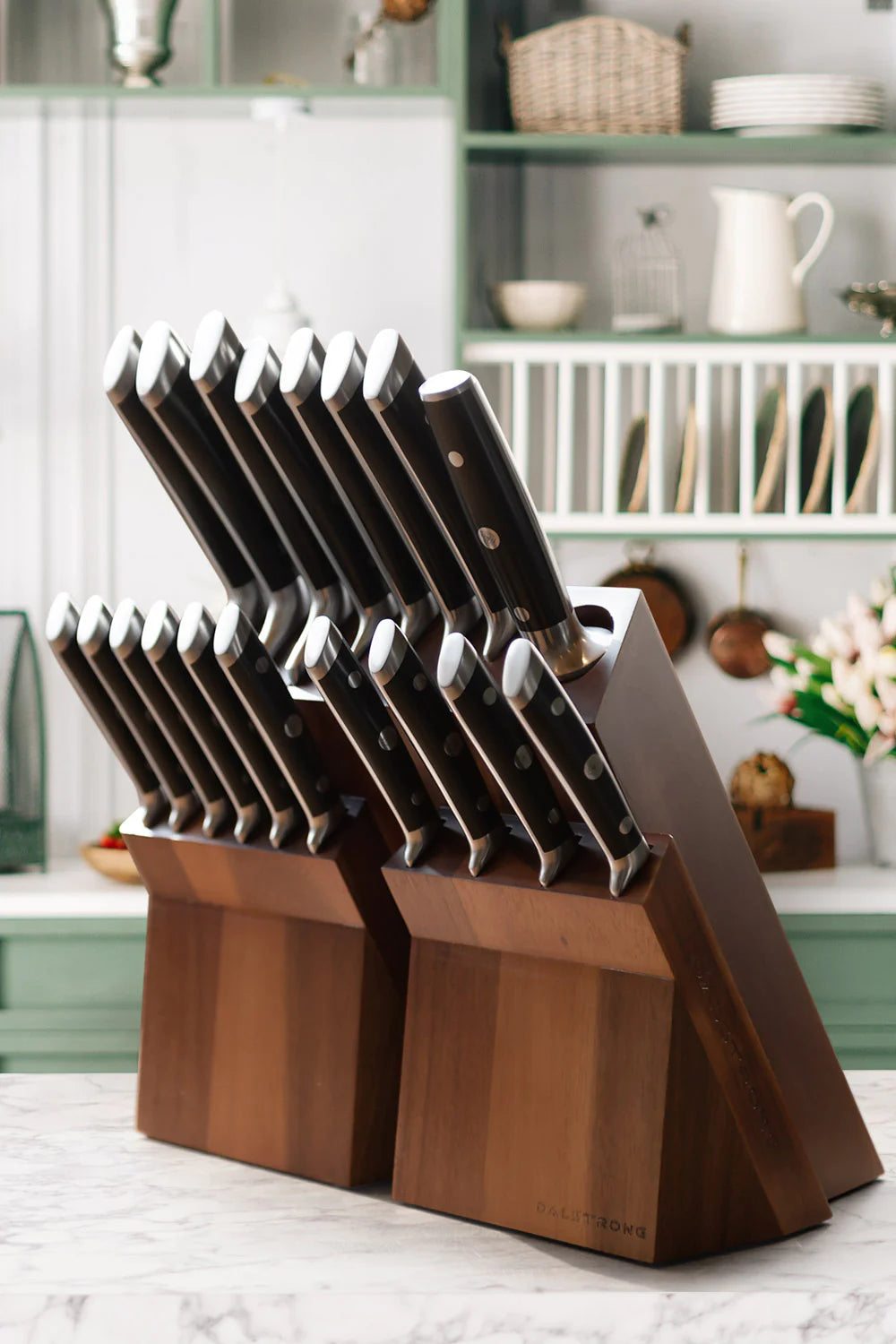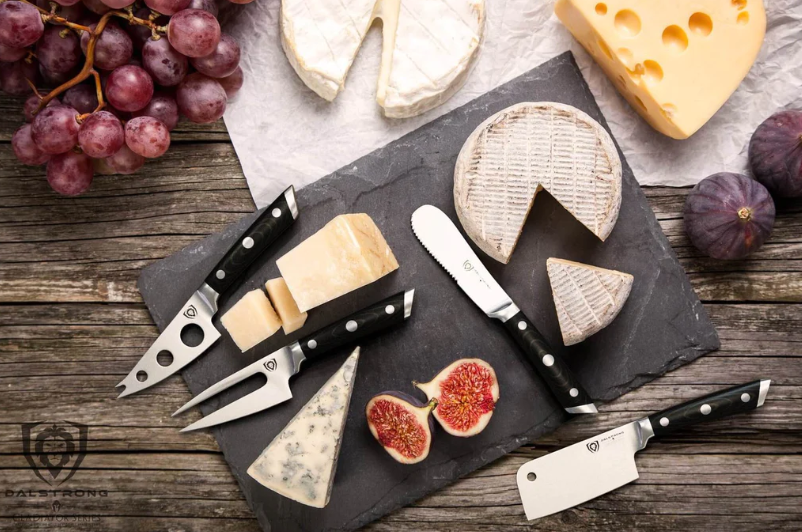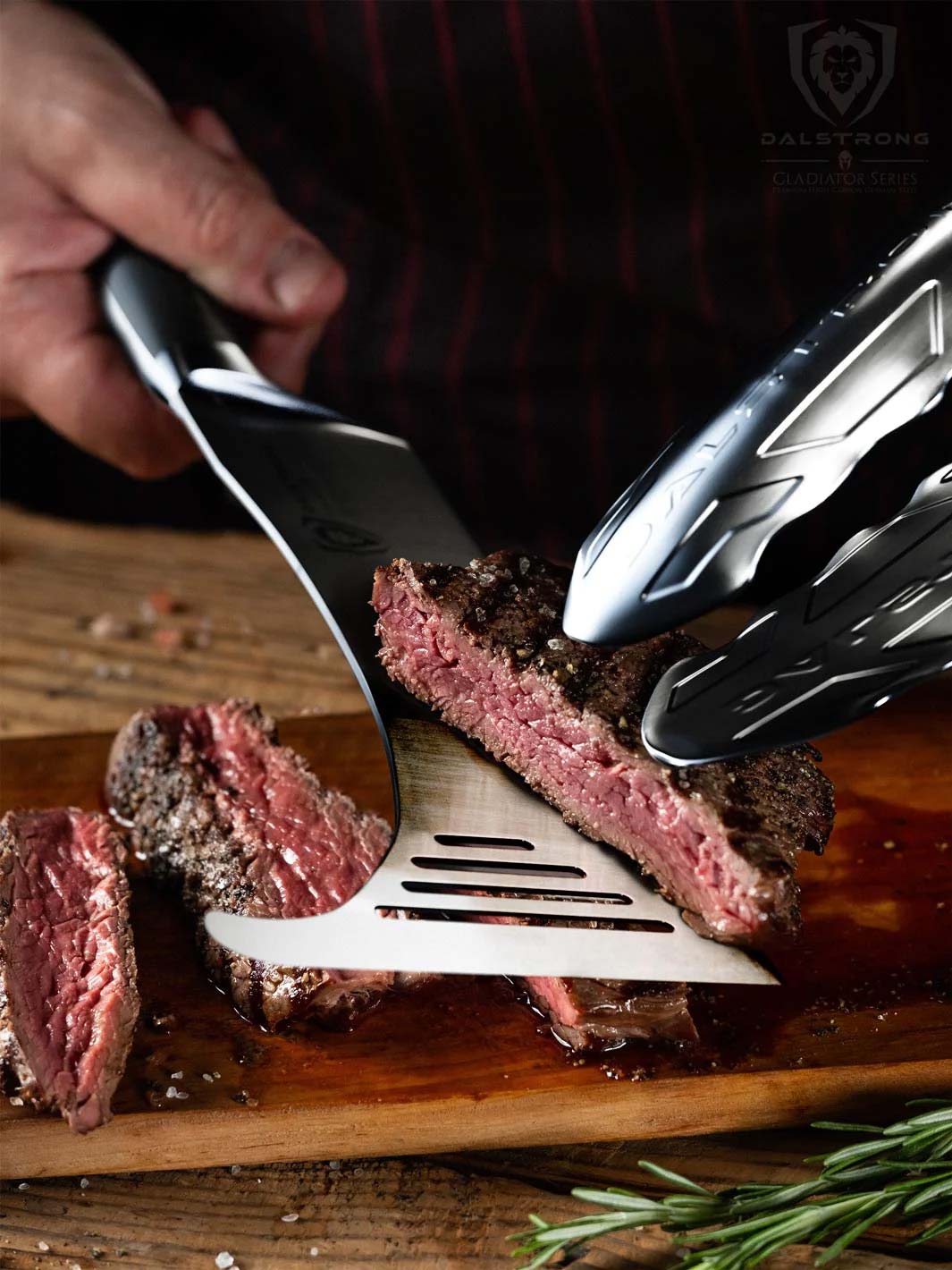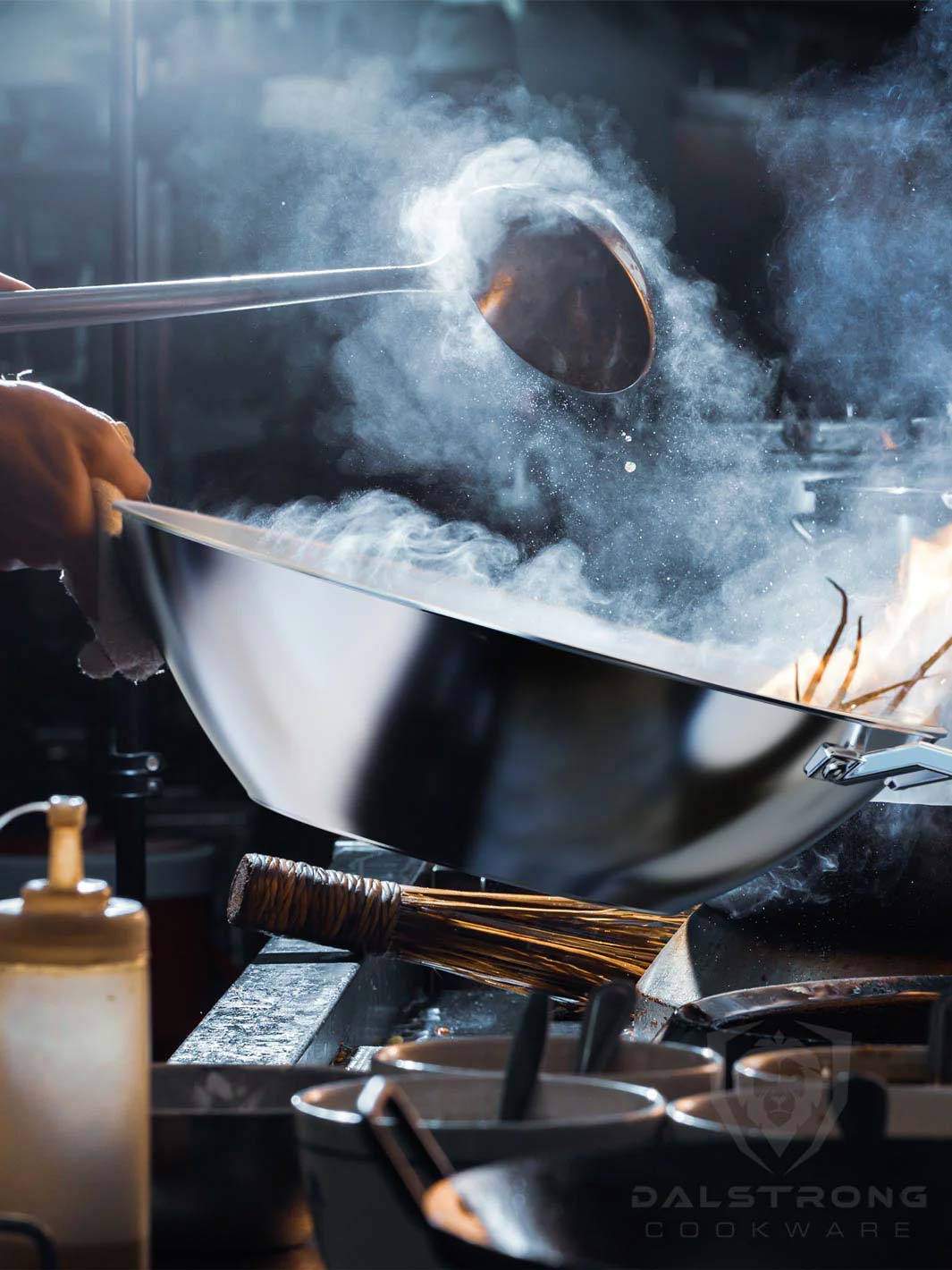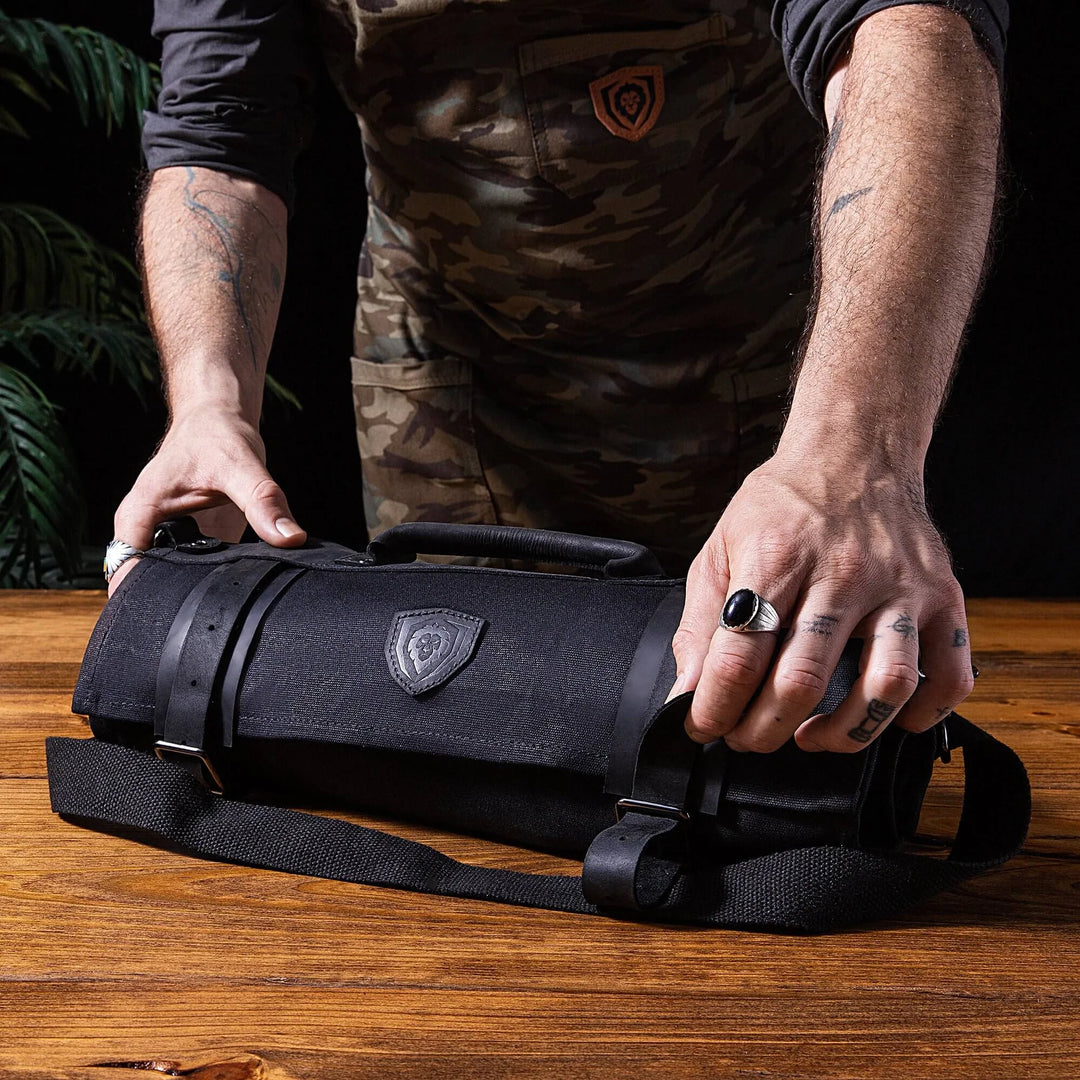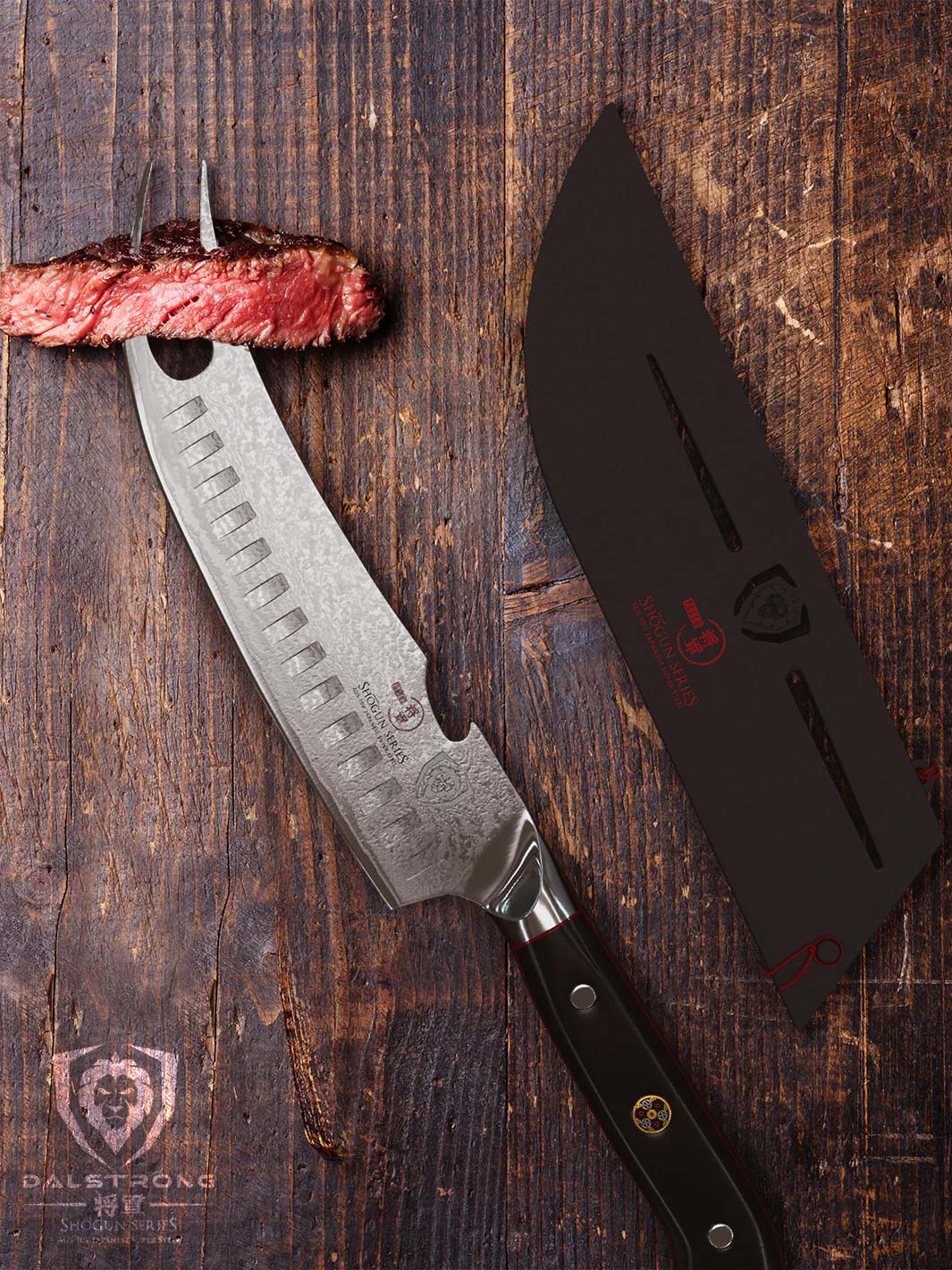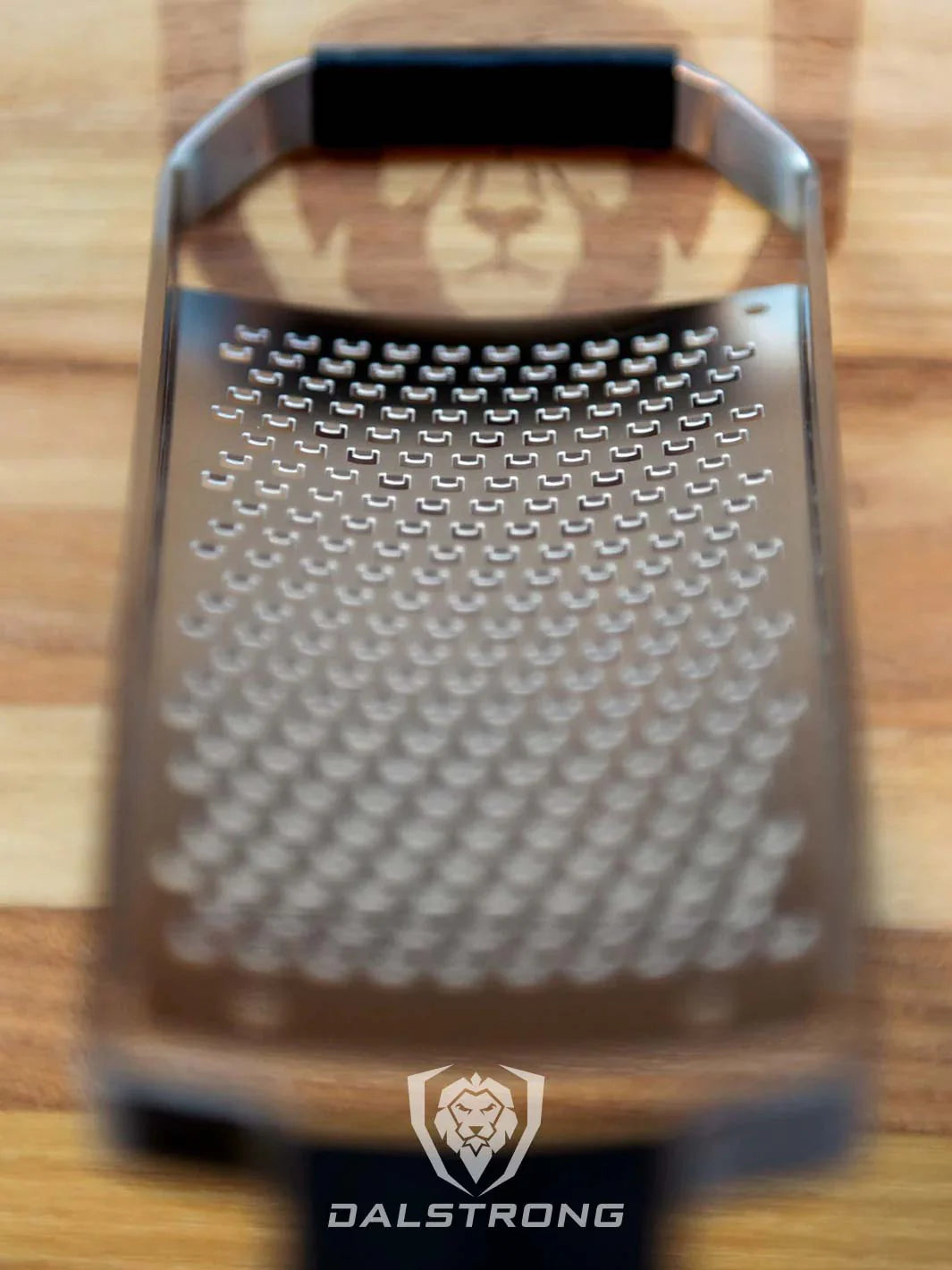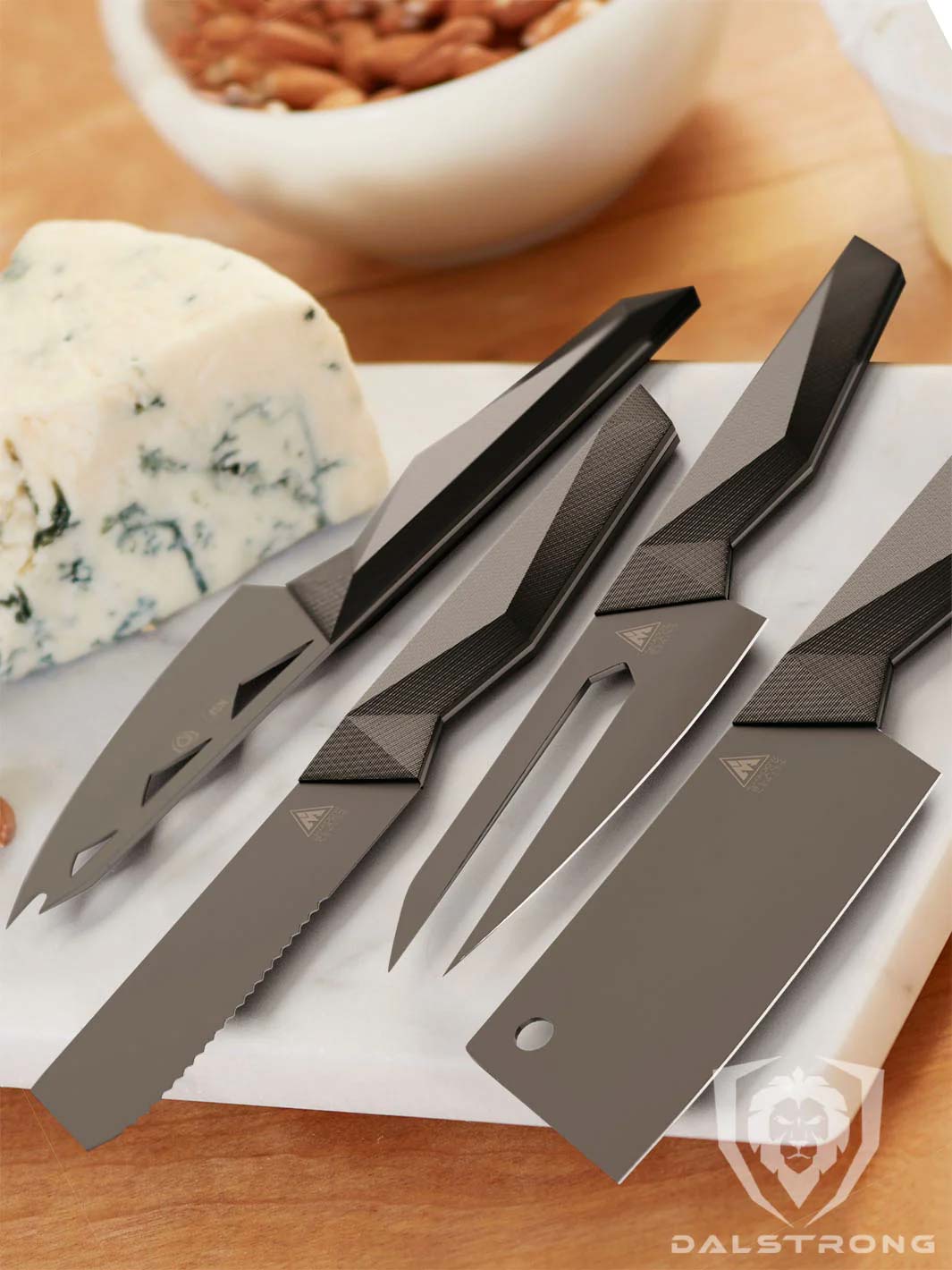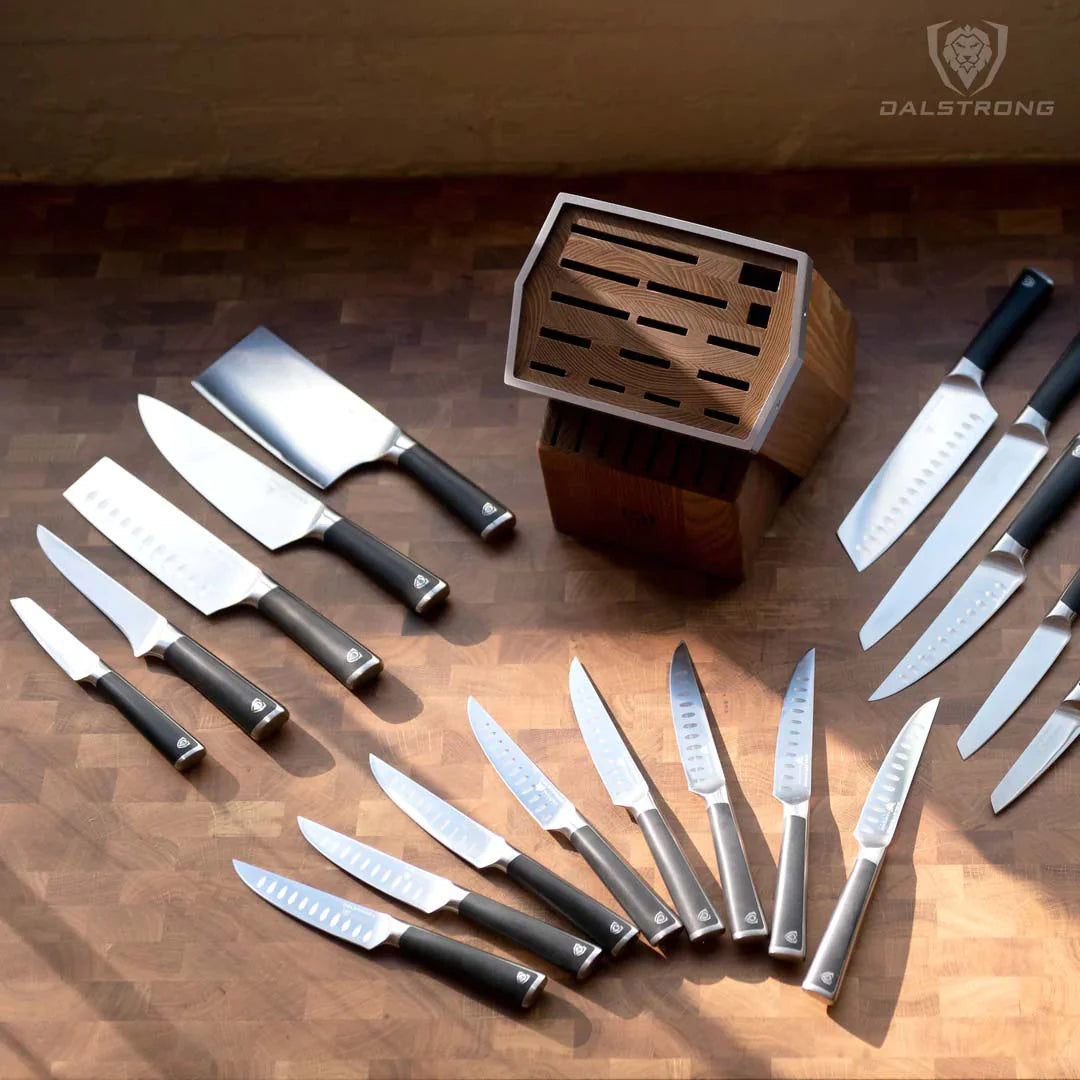The Most Professional Quality Kitchen Knife Best Price
 Valhalla Series Chef & Cleaver Hybrid Knife 8"
Valhalla Series Chef & Cleaver Hybrid Knife 8"
Here are our favorite knives at an unbeatable price:
- Gladiator Series Chef Knife 8"
- Shadow Black Series Fillet Knife 6"
- Phantom Series Cleaver Knife 4.5"
- Gladiator Series 3-Piece Paring Knife Set
- Centurion Series Chef & Cleaver Hybrid Knife 8"
1. Why A Professional Quality Knife Is Essential For Every Home Chef
When I look back at my own journey as a home cook, the main thing I find myself wishing is that I hadn't taken so long to actually learn the ins-and-outs of kitchen knives. Because you don’t have to be a contestant on Top Chef to appreciate a high-quality knife. Even home cooks benefit from tools that make prepping ingredients faster, easier, and -- dare we say -- more fun.
Whether you're tackling a prime rib roast with a carving knife or finely slicing garlic with a paring knife, a professional knife turns a chore into an art.
Safety first (of course)
If you've read this blog before, then you've heard us bang this gong many times: dull knives are far more dangerous than sharp ones. A professional knife stays sharper longer, so you’re less likely to slip and nick a finger. (Bonus: no more wrestling with tomatoes!) And when you’ve got a quality tool in hand, tasks like slicing bread or deboning fish become buttery smooth -- no “frying pan” drama required.
The right tool for every job
Professional chefs don’t rely on one knife for everything -- and neither should you. From bread knives for perfect slices to santoku knives for that seamless rocking motion, each knife has a role. Start with an 8-inch chef knife and expand your collection from there with utility knives, steak knives, butcher knives, and more.
Building a collection that works
While it’s tempting to grab a single chef knife and call it a day, a solid collection of chef knife sets or knife blocks can transform your cooking game. These sets often include essentials like paring knives, carving knives, and even specialty tools like kitchen shears. A professional kitchen isn’t just about having one great knife -- it’s about having the right knife for the task at hand.
More tips and tricks on how to build out a well-balanced knife collection below!
The role of sharpening steel and honing steel
Keeping your knives in top shape is a cornerstone of a professional kitchen. That’s where sharpening steel and honing steel come in. These tools are essential for maintaining the edge of your professional knife, ensuring that every slice is as smooth as the last. Remember, a dull knife isn’t just inefficient -- it’s downright dangerous.
Tested by the best
Ever wonder how some knives get their reputation? Many of the top options are knives we tested in both professional kitchens and home environments. Professional chefs swear by certain brands because they deliver consistent results, whether you’re slicing delicate herbs or tackling tougher cuts of meat. These are the kitchen essentials you didn’t know you needed.
Read about the 5 tips for caring for kitchen knives: Dos and Don'ts, here.
2. Essential Features Of Professional Quality Kitchen Knives
Before diving into the specifics of blade materials and design, it’s important to understand why these features matter. A professional-quality knife is more than just a tool; it’s an extension of your skills in the kitchen. From durability to ease of use, each element contributes to the knife’s ability to handle different tasks with precision. This section explores the key aspects that define a truly excellent knife, shedding light on what to look for and how these features impact both performance and cost.
Blade material
The type of material used in a knife’s blade affects everything from its durability to how well it holds an edge. Let’s break down some popular blade materials:
Carbon steel: Known for its razor-sharp edge, carbon steel is a favorite among professional chefs. It’s highly durable but requires regular maintenance to prevent rust. While pricier than stainless steel, its longevity and performance often justify the cost.
Stainless steel: A versatile and low-maintenance option, stainless steel knives are resistant to rust and staining. They may need more frequent sharpening, but their affordability makes them a great choice for home cooks. High-quality stainless steel, like German steel, strikes a good balance between price and performance.
Damascus steel: These knives are as stunning as they are functional. Made by layering different types of steel, Damascus knives combine sharpness with unique aesthetics. They’re typically on the higher end of the price spectrum due to the craftsmanship involved.
Ceramic: Lightweight and incredibly sharp, ceramic blades are great for precision tasks. However, they’re brittle and prone to chipping, making them less suitable for heavy-duty use. Ceramic knives are often more affordable but lack the versatility of steel options.
Titanium: While not as common, titanium blades are lightweight and resistant to corrosion. They’re ideal for those who want a durable knife with minimal upkeep, though their price can be steep compared to stainless steel.
Understanding these materials helps you weigh the pros and cons when shopping. While carbon steel might appeal to serious cooks for its performance, stainless steel is often the go-to for its ease of use and affordability. Damascus and ceramic knives cater to niche needs or aesthetic preferences, often at a premium.
Blade length: Not one-size-fits-all
Blade length matters more than you think. An 8-inch chef’s knife is versatile and ideal for most tasks, from chopping vegetables to slicing meats. Longer blades, such as those on carving knives, make it easier to handle large cuts of meat or poultry, while shorter blades like those on paring knives are perfect for detailed work, such as peeling fruit or deveining shrimp.
Choosing the right blade length isn’t just about the task at hand -- it’s also about comfort. A blade that feels balanced with the handle shape will make slicing and dicing more efficient and enjoyable.
Comfortable to hold
Handle shape and round handles play a significant role in how a knife feels during use. A well-designed handle ensures a comfortable grip, reducing hand fatigue during extended prep sessions. For professional chefs who spend hours using their tools, handle shape can be a game-changer.
When selecting a knife, look for one that feels like an extension of your hand. The balance between the blade and handle is crucial for precise control. Professional chefs often test knives by mimicking common cutting motions, like the smooth rocking motion used for mincing herbs or the deliberate slicing of proteins.
Versatility and specialized tools
Professional chefs rely on a variety of kitchen tools to tackle diverse culinary tasks. A solid knife set will include slicing knives for delicate cuts, utility knives for everyday needs, and carving knives for those show-stopping roasts. Each tool has its place, and together, they create a seamless cooking experience.
An 8-inch hollow-edge chef’s knife stands out as a versatile option, especially for home cooks. The hollow edges reduce friction, making it easier to slice through ingredients without sticking. This design feature, paired with a rocking motion, makes the knife a favorite for slicing and dicing.
The impact of design on performance
The design of a knife can significantly impact its performance. From the blade material to the balance between the blade and handle, every detail matters. Single knives with specialized features, like hollow edges or precision-forged blades, often come with a higher price tag but deliver unmatched quality and longevity.
Professional chefs often gravitate toward brands that prioritize ergonomic designs and durable construction. The combination of blade length, handle comfort, and blade material creates a tool that excels in both precision and reliability.
Complementary kitchen tools
No knife exists in a vacuum. Complementary tools are just as important for maintaining a functional kitchen. A sturdy cutting board, kitchen shears for versatile cutting, and honing steel to maintain sharp edges are all essential additions. Together, these tools enhance the functionality of your knives and extend their lifespan.
Professional chefs often emphasize the importance of a well-rounded kitchen setup. It’s not just about having the best knives -- it’s about having the right tools to support them.
How price reflects quality
Quality often comes at a price, but understanding what you’re paying for can help you make an informed decision. Brands like Dalstrong, Le Creuset and Wüsthof Classic are renowned for their durability and performance, but they also reflect the craftsmanship involved in their production.
High-quality knives, whether made from German steel or precision-crafted carbon steel, are designed to last a lifetime. While they may cost more upfront, their longevity and performance make them a worthwhile investment. Keep an eye out for deals on Prime Day or other sales events to snag top-tier knives at a discount.
3. Where To Find Best Priced Professional Quality Kitchen Knife
Finding a professional kitchen knife at the best price doesn’t mean waiting for Prime Day (though it doesn’t hurt). Look for high-quality knife sets or block sets that bundle multiple knives at a discount. These bundles often include utility knives, slicing knives, and even specialty tools like carving knives, providing great value for home cooks and professional chefs alike.
Consider gift subscriptions
Gift subscriptions are another smart way to find great deals. Many brands, including those offering Damascus chef knives or carbon steel options, provide subscription services that let you build a collection gradually. This is perfect for home cooks looking to elevate their kitchen essentials over time without a massive upfront cost.
Explore trusted brands
Brands like Wüsthof Classic, Global Classic, and Dalstrong deliver consistent quality across their ranges. Whether you need a carving set, a santoku knife with an edge santoku design, or a versatile 8-inch chef’s knife, these brands ensure durability and performance. Dalstrong, in particular, combines stunning craftsmanship with reasonable pricing, making it a favorite among professional chefs and home cooks alike.
If possible, try before you buy
Whenever possible, test chef’s knives in-store. Pay attention to the balance, how comfortable they feel to hold, and how they handle tasks like a smooth rocking motion or slicing through tougher ingredients. If in-person testing isn’t an option, look for online reviews, particularly those from trusted sources that test chef’s knives rigorously.
Don’t overlook sales
Major sales events like Prime Day or end-of-year clearances are excellent opportunities to grab high-end knives at a discount. Whether you’re eyeing a steel knife set, a Japanese knife, or a Damascus chef knife, these sales can make premium options more accessible. Keep an eye out for deals that include extras like carving knives, utility knives, or knife block sets.
Buy directly from the source
Cut out the middleman and buy directly from the knife company’s website. This approach often gives you access to better prices and exclusive deals. For instance, Dalstrong, a standout in the world of premium knives, offers an extensive online catalog with unbeatable prices on everything from Japanese knives to stainless steel knives. Their knife block sets, 8-inch chef’s knives, and even specialty carving sets are known for being both affordable and high-quality. Plus, their customer service makes the process seamless.
4. How to Build a Well-Rounded Knife Collection
Start with the essentials
Every great knife collection begins with a few key pieces. An 8-inch chef’s knife is the workhorse of any kitchen, capable of handling most slicing, dicing, and chopping tasks. Pair it with a paring knife for more intricate jobs like peeling or deveining shrimp, and a serrated bread knife to tackle crusty loaves and delicate pastries. These three knives form the foundation of your kitchen arsenal.
Add specialty knives
Once you have the basics, consider expanding your collection with specialty knives tailored to your cooking style. A carving knife is ideal for perfectly slicing roasts, while a santoku knife excels at precise chopping and slicing with its hollow-edge design. Boning knives are great for meat preparation, and slicing knives make serving dishes like smoked salmon or ham an elegant affair. If you enjoy cooking fish, a filleting knife will quickly become indispensable.
Explore knife sets and blocks
For those looking to invest in a complete solution, knife sets and blocks are an excellent choice. These collections often include all the essentials plus a few extras, like utility knives or kitchen shears. Look for sets made from high-quality materials like carbon steel or German steel, as these will last for years with proper care.
Consider aesthetic appeal
A knife collection isn’t just about function -- it’s also about style. Brands like Dalstrong and Global Classic offer stunning designs that bring a touch of elegance to your kitchen. Damascus steel knives, with their intricate patterns, are as much a conversation piece as they are a cutting tool. Choosing knives that are both beautiful and functional ensures your collection stands out.
Build gradually
There’s no need to buy an entire collection at once. Start with a few high-quality knives and add to your collection over time as your cooking skills and needs evolve. Look for sales or consider gift subscriptions to spread out the cost and enjoy the process of curating your tools.
(Or, if you'd rather skip past a bunch of steps, you can look into getting the Gladiator Series 18 Piece Colossal Knife Set with Block – it really is a steal)
Storage and care
Finally, ensure your investment is protected with proper storage and maintenance. A sturdy knife block or magnetic strip keeps your knives organized and easily accessible while preventing damage to the blades. Regular honing and occasional sharpening will keep them performing at their best, ensuring your collection remains a joy to use for years to come.
5. Best Priced Dalstrong Knives For You
1. Gladiator Series Chef Knife 8"
If you’re looking for a knife that can handle just about anything in the kitchen without breaking the bank, the Dalstrong Gladiator Series 8” Chef Knife might just be your new best friend. This knife is super versatile -- perfect for slicing, chopping, and dicing everything from veggies to proteins. The blade is made from high-carbon German steel, so it’s crazy sharp and tough enough to last through years of cooking adventures. The handle is comfortable, durable, and easy to grip, even if you’re working on a marathon meal. It even comes with a sleek sheath to keep it safe when it’s not in use.
PROS:
- Sharp, high-carbon German steel blade that’s built to last and stays sharp longer.
- Comfortable, ergonomic handle that feels good in your hand and doesn’t wear you out.
- Comes with a protective sheath, so no need to worry about accidents in the drawer.
- Incredible value for a knife that performs like this -- it punches way above its price tag.
CONS:
- The blade’s width might feel a bit bulky if you’re used to smaller knives.
- Its weight has a satisfying heft, but some people might find it takes getting used to.
2. Shadow Black Series Fillet Knife 6"
If you’re serious about prepping fish or poultry, the Dalstrong Shadow Black Series 6” Fillet Knife might just be what you’ve been missing. It’s got a sleek, sharp blade designed for precision -- perfect for gliding through skin, around bones, and into those tricky spots with ease. The black, non-reflective coating isn’t just for looks; it’s functional, too, helping with corrosion resistance and making the blade non-stick. The handle is super comfortable, with a military-grade G10 material that’s practically indestructible. It’s lightweight and easy to maneuver, making it a great addition to your kitchen, whether you’re a seasoned pro or just starting to experiment with filleting.
PROS:
- The narrow blade and sharp tip make filleting fish or trimming poultry quick and effortless.
- Military-grade G10 handle is tough, easy to grip, and resistant to heat, cold, and moisture.
- Black titanium-nitride coating not only looks cool but also boosts durability and non-stick performance.
- Lighter and more maneuverable compared to the Gladiator Series, making it perfect for delicate, precise work.
CONS:
- Its specialized design might feel limiting if you’re looking for a more versatile all-purpose knife.
- The lightweight build is great for precision, but it doesn’t have the hefty feel of the Gladiator Series if you prefer that.
3. Phantom Series Cleaver Knife 4.5"
You know when you need a cleaver, but the full-sized ones feel like overkill? That’s where the Phantom Series 4.5” Mini Cleaver shines. It’s small but packs a serious punch -- great for slicing cured meats, cheeses, veggies, or even tackling smaller cuts of meat. The blade is ridiculously sharp and made from Japanese steel, so it holds up even if you’re using it every day. The handle feels great in your hand, with a traditional Japanese shape that gives you awesome control. Plus, it’s got this cool mosaic detail that makes it feel fancy without being over-the-top. If you’ve been wanting a cleaver that’s easy to use and still gets the job done, this is worth checking out.
PROS:
- Perfect size for small, precise tasks, like chopping garlic or slicing cheese, without feeling bulky.
- Crazy sharp Japanese AUS-8 steel blade that stays sharp and is easy to clean.
- Handle feels super comfortable and gives you great control, plus it looks gorgeous with the mosaic detail.
- Much lighter and more agile compared to full-sized cleavers or heavier knives like the Gladiator Chef Knife.
CONS:
- It’s not built for heavy-duty tasks, so don’t expect it to replace a full-sized cleaver for big jobs.
- The partial tang design is sturdy, but if you’re used to a full tang knife like the Shadow Black Fillet Knife, it might feel a little different.
4. Gladiator Series 3-Piece Paring Knife Set
This 3-piece paring knife set is an amazing deal. You get three knives tailored for different tasks: a bird’s beak for peeling, a serrated blade for slicing through tougher skins, and a sheep’s foot for precision cuts. The blades are made from high-carbon German steel, so they’re sharp, durable, and ready for anything. The handles feel solid and comfortable, giving you great control, whether you’re peeling an apple or slicing a tomato. Getting all three knives together means you’re prepared for just about any small-scale kitchen task, and the bundle saves you from having to piece together a set over time.
PROS:
- Includes three specialized knives, so you’re covered for peeling, slicing, and detailed cutting tasks.
- Sharp and durable high-carbon German steel blades that are easy to maintain.
- Ergonomic, triple-riveted handles that are comfortable to hold and built to last.
- Incredible value for a set of high-quality knives, especially compared to buying them individually.
CONS:
- These knives are more task-specific, so they might not get as much use as a more versatile tool like the Gladiator Chef Knife.
-
If you’re used to heavier knives, these might feel lighter and less substantial in hand.
5. Centurion Series Chef & Cleaver Hybrid Knife 8"
If you’re big into BBQ or work with a lot of meat, the “Crixus” might be your new best friend. It’s this cool mashup of a chef knife and a cleaver, so you get the heft to tackle tough cuts and bones but still have enough finesse for regular prep work like chopping veggies or slicing meat. The blade is super sharp Swedish steel, and it’s got a nice curve that makes it great for different cutting styles. Plus, the handle is built to last -- comfortable, sturdy, and able to handle whatever you throw at it.
PROS:
- The hybrid design gives you the power of a cleaver and the versatility of a chef knife in one tool.
- The Swedish steel blade is razor-sharp and stays sharp for a long time.
- The handle is comfortable to hold and tough enough to handle heat, cold, or moisture without any issues.
- The broad blade is perfect for scooping up and transferring food, which isn’t as easy with slimmer knives like the Gladiator Paring Knife Set.
CONS:
- It’s on the heavier side, so if you’re used to lighter knives like the Phantom Mini Cleaver, it might take some getting used to.
- While it’s versatile, the design is definitely geared toward meat prep, so it might not be your go-to for every single task.
6. Frequently Asked Questions
What is the most popular knife used in the professional kitchen?
The classic 8-inch chef’s knife is easily the most popular knife used in kitchens. It’s versatile enough to slice, dice, and chop anything from onions to steaks.
Which kitchen knives stay sharp the longest?
Carbon steel knives are legendary for holding an edge -- though they require regular maintenance with a honing steel or sharpening tools. If you’re after low-maintenance options, high-quality stainless steel knives are a solid choice.
What knives do chefs really use?
Professional chefs rely on a mix of knives: chef’s knives, santoku knives, boning knives, and slicing knives, to name a few. Japanese knives like Dalstrong's Shogun series is popular for their precision and style.


















































































